Activities
MathQI Seminars take place at Fac. CC. Matemáticas (UCM), Room 222, or at ICMAT.
15 Dec 2025, 12:30 - UCM
Junqiao Lin (CWI Amsterdam) : MIPco=coRE
The complexity class MIPco refers to multi-prover interactive proof systems in the commuting-operator model of entanglement. Intuitively, this class captures the computational complexity of estimating the optimal commuting-operator value of a non-local game. In a recent paper, I showed that MIPco = coRE, where coRE is the complexity class associated with the non-halting problem (notably, the “co” in these two settings refers to different notions). This resolves the major open problem left by the breakthrough result MIP* = RE.
In this talk, I will describe several mathematical techniques that allow key components of the MIP* = RE proof to be adapted to the commuting-operator setting. I will also discuss the implications of this result for both the quantum information and operator algebra communities.
15 Dec 2025, 11:00 - UCM
Álvaro Yangüez (Sorbonne Université) : Efficient Quantum Measurements: Computational Max-and Measured Renyi Divergences and Applications
Quantum information processing is limited, in practice, to efficiently implementable operations. This motivates the study of quantum divergences that preserve their operational meaning while faithfully capturing these computational constraints. Using geometric, computational, and information theoretic tools, we define two new types of computational divergences, which we term computational max-divergence and computational measured R'enyi divergences. Both are constrained by a family of efficient binary measurements, and thus useful for state discrimination tasks in the computational setting. We prove that, in the infinite-order limit, the computational measured R'enyi divergence coincides with the computational max-divergence, mirroring the corresponding relation in the unconstrained information-theoretic setting. For the many-copy regime, we introduce regularized versions and establish a one-sided computational Stein bound on achievable hypothesis-testing exponents under efficient measurements, giving the regularized computational measured relative entropy an operational meaning. We further define resource measures induced by our computational divergences and prove an asymptotic continuity bound for the computational measured relative entropy of resource. Focusing on entanglement, we relate our results to previously proposed computational entanglement measures and provide explicit separations from the information-theoretic setting. Together, these results provide a principled, cohesive approach towards state discrimination tasks and resource quantification under computational constraints.
11 Dec 2025, 12:00 - UCM
José Polo Gómez (MPQ Garching) : Casual maps in Quantum Field Theory
In this talk, we will define and characterize localized causal operations in a real scalar quantum field theory, and we will show that these operations exactly correspond to those satisfying various equivalent no-signalling conditions. We will show that there is a straightforward correspondence between this characterization and previous results for discrete quantum mechanical systems. Finally, we will define a faithful quantifier of how much a map enables faster-than-light signalling in a given field state, and we will apply our results to revisit relevant examples, providing straightforward proofs of their causal (or acausal) behaviour.
27 Oct 2025, 12:30 - UCM
Sofyan Iblisdir (UB) : Coupling from the past and tiling
Coupling from the past (CFTP) for exact sampling was introduced about 30 years ago. For some systems, like the ferromagnetic Ising model, this idea gives rise to simple and practically feasible schemes. Beyond this easy regime, the picture is not clear. Focusing on local Markov chains, and the two-dimensional Ising model (any couplings and magnetic fields), we will present a description of CFTP in terms of tile sites associated with each lattice site (i.e. local information). We conjecture this description can be used to prove that detecting complete coalescence, i.e. termination of the CFTP process to a perfect sample, is NP-hard. Work in progress with Pablo Paéz Velasco y David Pérez García.
13 Oct 2025, 12:30 - UCM
Aram Harrow (MIT) : Randomized truncation
Given a vector v, what is the closest k-sparse vector? The answer to this question is usually that we should take the largest k entries of v. It turns out that we can do better with randomized approximations. When approximating pure bipartite entangled states with states of low Schmidt rank, this means that mixed approximations outperform pure approximations. This fact has application to classical algorithms for matrix product states by improving the truncation step, and to quantum algorithms for Hamiltonian simulation. Joint work with Angus Lowe and Freek Witteveen.
29 May 2025, 16:00 - UCM
Mikael Rordam (University of Copenhagen) : A functional analysis approach to entanglement
An old question raised by Barker and Namioka-Phelps asks when two specific tensor products of compact convex sets (or convex cones) coincide. It was conjectured that this is the case precisely if one of the two convex sets is a Choquet simplex. Namioka-Phelps proved this to be the case when one of the two sets is the square, and Aubrun-Lami-Palazuelos-Plavala recently settled the conjecture in the finite dimensional case. As pointed out in their paper, one can interpret the situation where the two tensor products are different as a manifestation of entanglement, which precisely is the case when the two convex sets are state spaces of matrix algebras. As a step towards understanding the infinite dimensional case, we consider tensor products of state spaces of general unital (infinite dimensional) C*-algebras and express these in terms of (infinite dimensional) entanglement in quantum information theory. This is a preliminary report on work in progress with Magdalena Musat. If time permits, I will sketch a simple proof obtained in recent collaboration with Blackadar of the fact that the trace simplex of a C*-algebra is a Choquet simplex.
8 May 2025, 12:00 - UCM
Alex Bredariol Grilo (CNRS): Improving quantum cryptography with computational assumptions
QKD is a landmark of how quantum resources allow us to implement cryptographic functionalities with a level of security that is not achievable only with classical resources. However, key agreement is not sufficient to implement all cryptographic functionalities of interest, and it is well-known that they cannot be implemented with perfect security, even if we have access to quantum resources. Thus, computational assumptions are necessary even in the quantum world.
In this talk, I will cover recent examples where computational assumptions allow us to achieve protocols with better properties than their classical counterparts. More concretely, I will talk about quantum implementations of multi-party computation, and about everlasting-secure key-agreement with simultaneous messages.
No prior knowledge of quantum cryptography is expected.
10 January 2025, 10:00 - UCM
Francisco Escudero (Qusoft, CWI, Amsterdam): Testing and learning structured quantum Hamiltonians
We consider the problems of testing and learning an unknown n-qubit Hamiltonian H from queries to its evolution operator e^{−iHt} under the normalized Frobenius norm. We prove:
1. Local Hamiltonians: We give a tolerant testing protocol to decide if H is ϵ1-close to k-local or ϵ2-far from k-local, with poly(1/(ϵ2−ϵ1)) queries, solving open questions posed in a recent work by Bluhm et al. For learning a k-local H up to error ϵ, we give a protocol with query complexity exp(k^2+klog(1/ϵ)) independent of n, by leveraging the non-commutative Bohnenblust-Hille inequality.
2. Sparse Hamiltonians: We give a protocol to test if H is ϵ1-close to being s-sparse (in the Pauli basis) or ϵ2-far from being s-sparse, with poly(s/(ϵ2−ϵ1)) queries. For learning up to error ϵ, we show that poly(s/ϵ) queries suffice.
3. Learning without memory: The learning results stated above have no dependence on n, but require n-qubit quantum memory. We give subroutines that allow us to learn without memory; increasing the query complexity by a (log n)-factor in the local case and an n-factor in the sparse case.
4. Testing without memory: We give a new subroutine called Pauli hashing, which allows one to tolerantly test s-sparse Hamiltonians with poly(s/(ϵ2−ϵ1)) queries. A key ingredient is showing that s-sparse Pauli channels can be tolerantly tested under the diamond norm with O(s/(ϵ2−ϵ1)) queries.
Along the way, we prove new structural theorems for local and sparse Hamiltonians. We complement our learning results with polynomially weaker lower bounds. Furthermore, our algorithms use short time evolutions and do not assume prior knowledge of the terms in the support of the Pauli spectrum of H.
13 December 2024, 10:00 - UCM
Kohtaro Kato (Nagoya University): Exact renormalization flow for Matrix Product Density Operators
Matrix Product Density Operators (MPDOs) provide an efficient tensor-network representation of mixed states in one-dimensional quantum many-body systems, often used to describe thermal states and steady states in dissipative dynamics. While MPDOs generalize Matrix Product States (MPS), which effectively describe 1D pure states and are associated with gapped ground states, the renormalization properties of MPDOs are more complex. In this work, we investigate real-space renormalization group (RG) transformations of MPDOs, modeled as circuits of local quantum channels. We impose that the renormalization flow must exactly preserve correlations between coarse-grained sites, ensuring that it is invertible through other local quantum channels. We first show that unlike MPS, which always admit well-defined isometric renormalization flows, MPDOs generally do not exhibit such exact flows. We introduce a subclass of MPDOs with well-defined renormalization flows, showing that these states possess a bialgebra structure and obey generalized symmetries described by Matrix Product Operators (MPO).
29 November 2024, 10:00 - UCM
David Trillo (CUNEF): Entanglement generation in (semi)classical gravity
We present the oldest model of (Newtonian) classical gravity interacting with (nonrelativistic) quantum mechanics due to Diósi and popularized by Penrose to try to explain spontaneous state collapse. This model treats the quantum system as fundamentally open, as it assumes a continuous measurement of position due to the always present gravitational interaction. As a result, the quantum system follows Linbladian dynamics. We show that such dynamics can generate entanglement in experimentally relevant scenarios, and thus our results cast doubt on the ubiquitous claim that entanglement generation is a signature of quantum gravity. Based on joint work with Miguel Navascués
8 October 2024, 16:00 - UCM (not the usual time!)
Yoshiko Ogata (Kyoto University): Boundary states of a bulk gapped ground state in 2-D quantum spin systems
10 May 2024, 12:00 - UCM
Mayeul Chavanne (ENSTA Paris, Institut Polytechnique de Paris): TBA
26 April 2024, 12:00 - UCM
Alvaro Martín Alhambra (IFT-CSIC): "Efficient thermalization with quantum Gibbs samplers"
The preparation of thermal states of matter is a crucial task in quantum simulation. In this work, we prove that a recently introduced, efficiently implementable dissipative evolution thermalizes to the Gibbs state in time scaling polynomially with system size at high enough temperatures, and for any Hamiltonian that satisfies a Lieb-Robinson bound, such as local Hamiltonians on a lattice. Furthermore, we show the efficient adiabatic preparation of the associated purifications or ``thermofield double'' states. To the best of our knowledge, these are the first results rigorously establishing the efficient preparation of high-temperature Gibbs states and their purifications. On a technical level, for high temperatures, our proof makes use of the mapping of the generator of the evolution into a Hamiltonian, and then analysing it as perturbation of the Hamiltonian corresponding to infinite temperature. Our results show that a family of quasi-local dissipative evolutions efficiently prepares a large class of quantum many-body states of interest, and has the potential to mirror the success of classical Monte Carlo methods for quantum many-body systems.
Joint work with Cambyse Rouzé and Daniel Stilck França
17 April 2024, 11:30 - UCM
José Garre Rubio (Universität Wien): "Emergent (2+1)D topological orders from iterative (1+1)D gauging"
Gauging involves introducing new degrees of freedom, known as gauge fields, to localize an existing global symmetry. It is known that, following this process, the gauge fields exhibit a dual global symmetry. Subsequently, one can gauge this emergent global symmetry by creating new gauge fields that once again exhibit a global symmetry. We investigate this iterative process, wherein new degrees of freedom are created and entangled with the previous ones through local symmetries. We focus on gauging spin chains with Abelian group symmetries and arranging the new spins on a 2D lattice. The local symmetries of the emergent 2D state, which are modified by the concatenation of the following gauging maps surprisingly correspond to the stabilizer terms of the XZZX-code generalized to any Abelian group. We encode our construction in the family of tensor network states that we dub ``projected entangled pair emergent states'' (PEPES). By utilizing this representation and by considering the local symmetries as stabilizer Hamiltonian terms, we establish a connection between the condensable anyons at the boundary and the quantum phase of the initial symmetric state before the gauging process.
1st March 2024, 12:00 - UCM
András Molnár (Universität Wien): "Matrix product states generating the same state"
Tensor networks are generated by a set of small rank tensors and define many-body quantum states in a succinct form. The corresponding map is not one-to-one: different sets of tensors may generate the very same state. A fundamental question in the study of tensor networks naturally arises: what is then the relation between those sets? The answer to this question has several applications, like the characterization of local and global symmetries, the classification of phases of matter and unitary evolutions, or the determination of the fixed points of renormalization procedures. In this talk I will focus on one dimensional systems and show how to derive the answer in a particular setup.
23rd February 2024, 12:00 - UCM
Marius Krumm (University of Innsbruck): "The min-entropy of classical-quantum combs for measurement-based applications"
Quantum combs are a generalization of quantum channels that allow to describe multi-round quantum communication protocols. In this framework, one can formulate the search for optimal protocols by formalizing both the environment and the strategy as a quantum comb. With this approach, a wide range of optimality problems can be solved using semi-definite programs (SDP), which have strong analytical guarantees. Chiribella and Ebler (NJP, 2016) introduced a notion of comb min-entropy to describe the optimal harvesting of Bell states from an environment. My coworkers and I introduced a notion of classical-quantum combs, in which the classical part is fixed and represents a classical secret to be learned. Applying the comb min-entropy to this scenario allows to determine the optimal guessing probability for the secret by solving an SDP. We applied this method to various scenarios in measurement-based quantum computation (MBQC), including quantitatively investigating the security of certain blind quantum computation protocols, completing the quantum reference frame of a MBQC device, and causal discovery in the form of determining the (g)flow of an MBQC device. While these methods are essentially exact, they suffer from a severe exponential complexity induced by the tabular description of quantum combs. Therefore, at the end we pose the research question whether it is possible to use tensor network approximations of quantum combs to build a heuristic polynomial complexity algorithm that approximates the exact solutions.
16th February 2024, 12:00 - UCM
Ángela Capel (University of Tübingen): "Towards a unification of different measures of correlations and locality in Gibbs states"
17th January 2024, 15:00 - UCM
Leonardo Santilli (Tsinghua University): "von Neumann algebras of holographic quantum systems from matrix model"
The near-horizon region of a black hole is described holographically by a large-N quantum mechanics. Due to the presence of the black hole horizon, it is expected that the operator algebras of these quantum systems at finite temperature are von Neumann algebras of type III_1.
In this talk, I will present rigorous results to characterize these algebras at large-N. I will then construct a family of quantum systems, inspired by the gauge/string duality, which present all the desired features at large-N. I will then show how to enrich these models and promote them to have a first order phase transition, at which the von Neumann algebra jumps from type I to type III_1, mimicking the formation of a black hole horizon at the Hagedorn temperature in the holographic dual setup.
Based on joint work with E. Gesteau.
29th November 2023, 15:00 - UCM
David Trillo Fernández (CUNEF)
Backflow in the Schrödinger equation on a line
Quantum backflow is a quantum mechanical phenomenon in which a free particle (that is, evolving under the free Schrödinger equation) on a line with only positive component of momentum can experience a net probability flow to the left. The maximum amount of integrated probability flux over any period of time that such a particle can experience is called the "Bracken-Melloy constant", and denoted cbm. Since its introduction in 1994, there have been many attempts to estimate this constant, but until now all of them have only given lower bounds, or the trivial upper bound of 1. We show, by seeing the problem in phase-space and almost-diagonalizing an integral operator consisting on integrating Wigner functions on hyperbolic regions, that cbm ≤ 0.08, thus complementing the lower bounds of the literature of cbm ≳ 0.038, but still leaving much room for improvement, if indeed cbm≈ 0.04, as conjectured. We furthermore show that cbm also bounds the size of many other quantum mechanical effects.
This is joint work with Thinh Le and Miguel Navascués.
15th November 2023, 15:00 - UCM
Miguel Gallego Ballester (Universität Wien)
Quantum theory at the macroscopic scale
It is usually believed that macroscopic systems (i.e. systems with a large number of degrees of freedom or a large number of particles) behave classically in realistic situations subject to noise and imperfections. We investigate the possibility of preserving the full mathematical structure of quantum theory in the macroscopic limit, even in the presence of decoherence, coarse-graining and losses. Our main result is a demonstration of device-independent macroscopic non-classicality in spatial as well as temporal correlations, certified by the respective violation of a Bell inequality and a Leggett-Garg inequality.
7th June 2023, 11:00 - UCM
Matteo Scandi (ICFO)
Quantum Fisher Information and its dynamical nature
https://arxiv.org/abs/2304.14984
22nd May 2023, 11:00 - UCM
Adrián Pérez Salinas (Leiden University)
Reduce&chop: Shallow circuits for deeper problems
The composition of these pieces is called reduce&chop. As we discuss, this approach works for certain cases of interest. We also provide a novel optimisation method to find this reducer. We believe this work may stimulate new research towards exploiting the potential of shallow quantum computers, even though immediate new uses of quantum devices are likely out of reach.
7 February to 31 March, 2023
ICMAT Research term
1st February 2023, 12:00 - UCM
Alex May (Stanford)
Non-local computation and gravity
NOTE: No prior knowledge of the AdS/CFT correspondence is required to follow the talk
30th January 2023, 12:00 - UCM
Aitor Balmaseda (UCM - UC3M)
Controlling quantum systems through their boundaries
The development of Quantum Information Theory and the aim for building quantum computers has increased the relevance of controlling quantum systems. The main goal of this talk is to present a non-standard method for controlling the state of a quantum system by modifying its boundary conditions instead of relying on the action of external fields to drive the state of the system.
In order to show the viability of this control scheme, we will focus on controlling pure states of a quantum system defined on (a generalisation of) quantum graphs. We will consider a subset of the self-adjoint boundary conditions of the free Laplacian on such systems.
We will briefly review the problem of existence of solutions for the Schrödinger equation with time-dependent boundary conditions basing on the approaches by J. Kisynski and B. Simon, providing a new stability result for Hamiltonians with constant form domain. This stability result has far reaching consequences for Quantum Control Theory as it allows to obtain a priori estimates on the error committed when driving the state of the system.
Finally, basing on the stability result and a controllability result by T. Chambrion et al. (2009) on the controllability for a class of bilinear quantum control systems, we are able to show the approximate controllability for our family of systems.
16th January 2023, 12:00 - UCM
Alvaro Alhambra (IFT-CSIC)
Classical simulation of short-time quantum dynamics
Joint work with Dominik S. Wild
7th December 2022, 12:00 - UCM
Javier Lopez Piqueres (UMass Amherst, Zapata)
Symmetric Tensor Networks for Generative Modeling and Constrained Combinatorial Optimization
14th November 2022, 12:00 - ICMAT - Aula Gris 1
Junye Huang, Maria Esperanza Molina and Guillermo Mijares (IBM)
Qiskit is an open source software development kit for quantum computing. In this talk, we will give you an overview of the Qiskit ecosystem and how you can use Qiskit for research, development and learning. We are going to walk you through building your first quantum circuits and running them on real quantum hardware using Qiskit and IBM Quantum platform. We will also show you how to apply Qiskit to chemistry and finance industry using Qiskit Nature and Qiskit Finance application modules.
15th June 2022, 12:00 - ICMAT - Aula Gris 1
Marius Junge (U. of Illinois): "Decay estimates and representation theory"
We show the entropy decay property corresponding to hypercontractivity for sublaplacian on compact groups.
We will also ask new counterexamples in the nontracial case.
Joint with Li Gao LaRacuente and Chen
4th April 2022, 11:00 - UCM
Leonardo Santilli (U. of Lisbon): "Exploring unitary matrix models and their phase diagrams"
I will give an introduction to matrix ensembles over classical Lie groups and analyze the problem of characterising their phase diagrams.
In the first part of the talk I will discuss finite N results and the role of symmetries and dualities. Character expansions are introduced as a tool to face these questions. Besides, a connection with amplitudes in spin chains will be presented.
In the second part I will review the large N limit, the method to address it and the ensuing phase diagram of the model. Examples with increasingly intricate phase diagrams will be detailed following a pedagogical approach.
Based on joint works with Miguel Tierz.
30th Mar 2022, 11:00h - UCM
Felix Huber (Institute of Theoretical Physics, Jagiellonian University, Krakow-Poland): "Dimension-free entanglement detection in multipartite Werner states".
Werner states are multipartite quantum states that are invariant under the diagonal conjugate action of the unitary group.
This paper gives a complete characterization of their entanglement that is independent of the underlying local Hilbert space: for every entangled Werner state there exists a dimension-free entanglement witness. The construction of such a witness is formulated as an optimization problem. To solve it, two semidefinite programming hierarchies are introduced. The first one is derived using real algebraic geometry applied to positive polynomials in the entries of a Gram matrix, and is complete in the sense that for every entangled Werner state it converges to a witness. The second one is based on a sum-of-squares certificate for the positivity of trace polynomials in noncommuting variables, and is a relaxation that involves smaller semidefinite constraints.
https://arxiv.org/abs/2108.
16th - 18th March 2022 - ICMAT
Functional Analysis, Quantum Computing and beyond
PhD and young researchers workshop
This workshop, jointly organised by Imperial College London, ICMAT and Universidad Complutense de Madrid, aims to gather PhD students and young researchers from different universities, creating a rich environment to discuss and share ideas. The workshop will mainly consist of short presentations in which each participant will share their work. Some of the topics covered will be functional inequalities, statistical mechanics, stochastic analysis, tensor networks, complexity theory and quantum machine learning.
28th Feb 2022, 11:00h - UCM
Andrés Ulibarrena Díaz: "Photons, Graphs, Crystals, Dots, Satellites and the Sun - An Overview of Edinburgh’s Mostly Quantum Lab"
Our research group, the Edinburgh's Mostly Quantum Lab (EMQL), is based on Heriot-Watt University. As the name implies, our research covers a wide variety of topics, from generating multiphoton states for quantum networking, parametric down conversion (PDC) crystal tailoring, quantum cryptography with quantum dots (in collaboration with another group), space-to-Earth quantum key distribution to studying the coherence of sunlight. In this talk I am going to give a theoretical introduction to our research in very broad strokes, then a general overview of our main laboratory, followed by a brief description of our projects; starting with the engineering side (PDC tailoring, entangled source creation) to the applications (with an emphasis on my main research topic, photonic graph state preparation).
18th Nov 2021 12:00h - Aula Luis Rodríguez Marín del Departamento de Matemática Aplicada de la UNED (Aula 2.32). E.T.S.I. Industriales.
Ángela Capel (Universität Tübingen): "Quantum logarithmic Sobolev inequalities for quantum many-body systems"
The evolution of an open quantum many-body system in a thermal bath with which it weakly interacts can be modelled by a quantum Markov semigroup. The time that it takes for an initial state on the system to reach the equilibrium with the bath is called mixing time. The mixing time of these Markovian dissipative evolutions of open quantum many-body systems can be bounded using optimal constants of certain quantum functional inequalities, such as the logarithmic Sobolev constant. For classical spin systems, the positivity of such constants follows from a mixing condition on the Gibbs measure, via quasi-factorization results for the entropy. Inspired by the classical case, I’ll present a strategy to derive the positivity of the logarithmic Sobolev constant associated to the dynamics of certain quantum systems from some clustering conditions on the Gibbs state of a local, commuting Hamiltonian.
30th Sep 2021, 11:30h - UCM
Alvin Moon (University of Copenhagen): "The quasi-adiabatic theorem and ground state phases in quantum spin systems"
Hastings's quasi-adiabatic method is a powerful tool in the analysis of gapped Hamiltonians in quantum spin systems. In the first part of this talk, I will present an adiabatic theorem for unique gapped ground states which requires a gap in the bulk and smoothness of ground state expectation values of sub-exponentially localized observables. In the second part, I will discuss aspects of stable phases of ground states, particularly local indistinguishability of finite-volume ground states from the bulk state. This talk is partially based on joint work with Yoshiko Ogata.
27th Sep 2021, 11:00h - UCM
Amanda Young (TUM): "A bulk gap in the presence of edge states for a Haldane pseudopotential"
In this talk, we discuss a recent result on a bulk gap for a truncated Haldane pseudopotential with maximal half filling, which describes a strongly correlated system of spinless bosons in a cylinder geometry. For this Hamiltonian with either open or periodic boundary conditions, we prove a spectral gap above the highly degenerate ground-state space which is uniform in the volume and particle number. These proofs rely on identifying invariant subspaces to which we apply gap-estimate methods previously developed only for quantum spin Hamiltonians. In the case of open boundary conditions, the lower bound on the spectral gap accurately reflects the presence of edge states, which do not persist into the bulk. Customizing the gap technique to the invariant subspace, we avoid the edge states and establish a more precise estimate on the bulk gap in the case of periodic boundary conditions. The same approach can also be applied to prove a bulk gap for the analogously truncated 1/3-filled Haldane pseudopotential for the fractional quantum Hall effect studied previously in [CMP 383 1093-1149 (2021)]. Based on joint work with Simone Warzel.
30th Jun 2020, 12:00h.
-online-
Tom Farshi (UCL): "Time-periodic dynamics generates pseudo-random unitaries".
How much does local and time-periodic dynamics resemble a random unitary? In this talk, I will address this question using the Clifford formalism from quantum computation. I will discuss and analyse a Floquet model with disorder, characterised by a family of local, time-periodic, random quantum circuits in one spatial dimension. I will present results from two different regimes. In one regime, the dynamics appear to be ergodic. In particular, after the scrambling time (when any initial perturbation has propagated throughout the system) the evolution operator can not be distinguished from a (Haar) random unitary, when all qubits are measured with Pauli operators. In the opposite regime, the system displays a novel form of localisation.
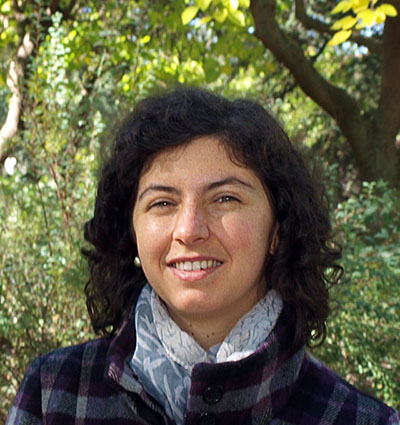 24th Jun 2020, 12:00h.
24th Jun 2020, 12:00h.
-online-
Patricia Contreras: "Agreement between observers: a physical principle?"
Is the world quantum? An active research line in quantum foundations is devoted to exploring what constraints can rule out the post-quantum theories that are consistent with experimentally observed results. We explore this question in the context of epistemics, and ask whether agreement between observers can serve as a physical principle that must hold for any theory of the world. We construct a generalisation of the seminal Agreement Theorem by Aumann, which states that two (classical) agents cannot agree to disagree, to nonsignalling settings. We find that the theorem still holds for quantum agents, while some (postquantum) nonsignalling agents may agree to disagree. Further, neither classical nor quantum agents can assign extremally disagreeing probabilities to perfectly correlated events, while some nonsignalling agents can. This makes it plausible that agreement might be a physical principle, while also establishing links between the fields of epistemics and quantum information that are worthy of further exploration.
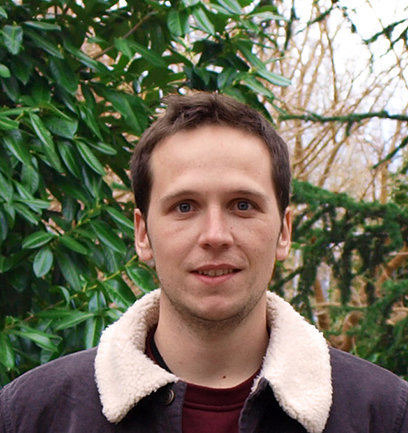 26th Maty 2020, 12:00h.
26th Maty 2020, 12:00h.
-online-
Antonio Pérez: "Locality Estimates for complex time evolution in 1D".
We will review some of the main ideas contained in the preprint arXiv:2004.10516 concerning phase transition, PEPS and locality estimates.
This is a joint work with David Pérez-García.
 12th May 2020, 12:00h.
12th May 2020, 12:00h.
-online-
Patricia Contreras: "Why standard entanglement theory is inappropriate for the study of Bell scenarios".
This talk is based on the recent paper [1].
Entanglement and nonlocality may be considered resources in quantum information: they are difficult to generate and easy to consume. The framework of resource theories makes it possible to quantify entanglement and nonlocality based on some free operations that are allowed in the physical scenario under study. The free operations for entanglement and nonlocality are often taken to be different: Local Operations and Classical Communication for entanglement; Local Operations and Shared Randomness (LOSR) for nonlocality. The paper argues that the nonclassicality of both of these resources can, and should, be studied under the same set of free operations, namely LOSR. The authors support LOSR as a unifying paradigm by showing that it resolves some common anomalies in the interplay of entanglement and nonlocality, for both bipartite and multipartite scenarios, and also gives a resource-theoretic account of self-testing which simplifies and generalises existing results. They also derive necessary and sufficient conditions on convertibility of states under LOSR in certain settings, and highlight some of the consequences such as the impossibility of catalysis for bipartite pure states.
[1] David Schmid, Thomas C. Fraser, Ravi Kunjwal, Ana Belén Sainz, Elie Wolfe, and Robert W. Spekkens. "Why standard entanglement theory is inappropriate for the study of Bell scenarios." arXiv:2004.09194
21st Apr 2020, 12:00h.
-online-
Germán Sierra: "The Prime state and its quantum relatives".
The Prime state of n-qubits, |Pn⟩, is defined as the uniform superposition of all the states corresponding to the prime numbers smaller that 2n. This state encodes, quantum mechanically, arithmetic properties of the primes. We shall show how to construct it efficiently using Grover’s algorithm. We shall also show that the Quantum Fourier Transform of the Prime state provides a direct access to Chebyshev biases in the distribution of prime numbers. Next we consider the entanglement entropy of |Pn⟩, up to n = 30 qubits, where we have found a relation with the Shannon entropy of the density of square-free integers. The same feature is found when considering states built from the superposition of primes in arithmetic progressions. Finally, we shall present the properties of other number-theoretical quantum states, such as those defined from composite numbers, square-free integers, etc.
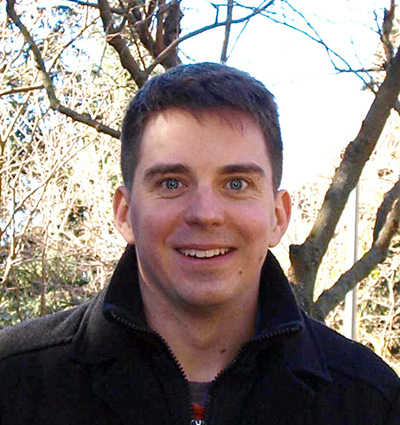 14th Apr 2020, 12:00h.
14th Apr 2020, 12:00h.
-online-
Andras Molnar: "Efficient description of many-body systems with Matrix Product Density Operators".
Matrix Product States form the basis of powerful simulation methods for ground state problems in one dimension. Their power stems from the fact that they faithfully approximate states with a low amount of entanglement, the "area law". In this work, we establish the mixed state analogue of this result: We show that one-dimensional mixed states with a low amount of entanglement, quantified by the entanglement of purification, can be efficiently approximated by Matrix Product Density Operators (MPDOs). In combination with results establishing area laws for thermal states, this helps to put the use of MPDOs in the simulation of thermal states on a formal footing.
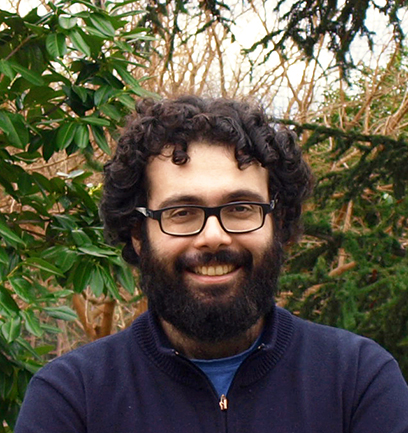
2nd Apr 2020, 17:00h.
-online-
Giannicola Scarpa: "How quantum information can improve social welfare".
10th Mar 2020, 12:00h.
-online-
Senaida Hernández-Santana: "Correlation decay in fermionic lattice systems with power-law interactions at non-zero temperature".
We study correlations in fermionic lattice systems with long-range interactions in thermal equilibrium. We prove a bound on the correlation decay between anti-commuting operators and generalize a long-range Lieb-Robinson type bound. Our results show that in these systems of spatial dimension D with, not necessarily translation invariant, two-site interactions decaying algebraically with the distance with an exponent α≥2D, correlations between such operators decay at least algebraically with an exponent arbitrarily close to α at any non-zero temperature. Our bound is asymptotically tight, which we demonstrate by a high temperature expansion and by numerically analyzing density-density correlations in the 1D quadratic (free, exactly solvable) Kitaev chain with long-range pairing.
Ref: Physical Review Letters 119, 110601 (https://arxiv.org/abs/1702.00371).
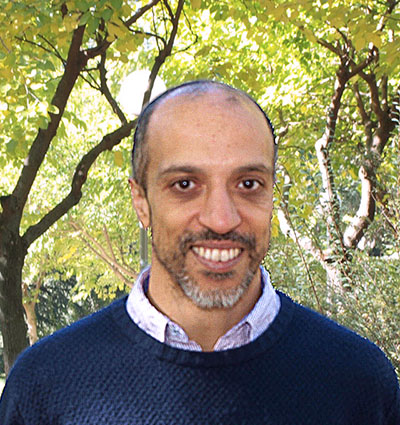 10th Mar 2020, 12:00h.
10th Mar 2020, 12:00h.
Sofyan Iblisdir: TBA
Special seminar where we will watch a recent talk from one of the authors of the proof MIP*=RE.
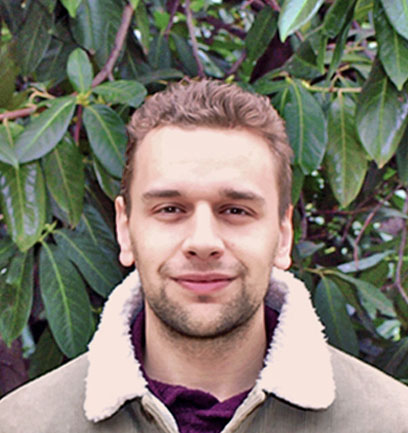
25th Feb 2020, 12:00h.
Alejandro Pozas-Kerstjens: "Genuine Network Multipartite Entanglement".
In this talk we will review the different notions of entanglement in multipartite systems, highlighting their issues when indicating that a state contains genuine multipartite entanglement. After that, we propose an alternative definition, multipartite network k-entanglement, which does not suffer from those issues. By employing the technique of quantum inflation, we provide analytic and numerical witnesses of the new notion of genuine network entanglement, and we reinterpret many past quantum experiments as demonstrations of it.
Sergey Bravyi, David Gosset and Ramis Movassagh: "Classical algorithms for quantum mean values".
Part II of QIP 2020 talks.
Video →
Slides →
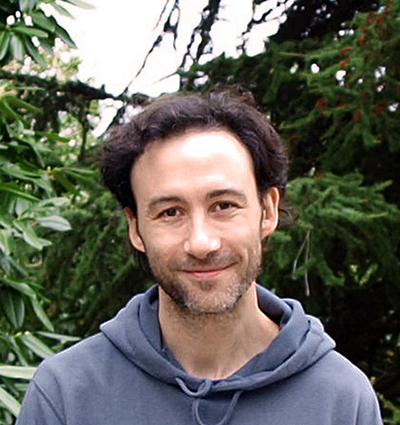 22nd Jan 2020, 12:30h.
22nd Jan 2020, 12:30h.
Carlos Palazuelos: "Universal entangleability of non-classical theories".
Inspired by its fundamental importance in quantum mechanics, in this seminar we will define the notion of entanglement for abstract physical theories by using the formalism of general probabilistic theories (GPTs). We will call two GPTs entangleable if their composite admits either entangled states or entangled measurements. Then, we will study the following fundamental question: Is every pair of non-classical theories entangleable?
Based on joint work with G. Aubrun, L. Lami and M. Plávala

16th Jan 2020, 12:30h.
Alejandro Pozas-Kerstjens: "On quantum causal models and Boltzmann machines".
In this introduction talk I will outline two research lines pursued during my PhD, enumerating questions that remain to be closed.First, I will present two independent methods that allow to falsify whether a given quantum causal model can explain some observed correlations. On one hand, scalar extension modifies known tools for studying quantum correlations so one can address those achievable in networks with causally-independent nodes, such as that underlying entanglement swapping. On the other hand, quantum inflation can be used for analyzing quantum correlations in arbitrary causal structures.Second, I will show a technique, inspired by statistical physics, that enables fast training of unsupervised machine learning models known as Boltzmann machines. The technique is rooted in the control of the spin-glass properties of the Ising model described by the Boltzmann machine's weights, which allows for a much faster training -both in training epochs and compute time per epoch- than conventional algorithms.

19th Dec 2019, 12:30h.
Ángela Capel: "Quantum supremacy using a programmable superconducting processor".
The promise of quantum computers is that certain computational tasks might be executed exponentially faster on a quantum processor than on a classical processor. A fundamental challenge is to build a high-fidelity processor capable of running quantum algorithms in an exponentially large computational space. In this talk, we will discuss a recent breakthrough concerning a task that the Sycamore processor takes 200 seconds to perform and for which a classical supercomputer would spend 10.000 years.
 5th Dec 2019, 12:30h.
5th Dec 2019, 12:30h.
Patricia Contreras: "Bipartite entanglement is sufficient for genuine multipartite nonlocality".
Quantum nonlocality and entanglement are inextricably linked. While entanglement is necessary to achieve nonlocality, it is not sufficient, as e.g. Werner states show. Still, all pure bipartite states are nonlocal, as per Gisin's theorem, and all pure, entangled states of any number of parties are bipartitely nonlocal. This work points out a relation in the opposite direction: we show, for almost all bipartitely entangled states, that (n-1) such states are n-way nonlocal. This also implies that (n-1) copies of a genuinely multipartitely entangled state are genuinely multipartitely nonlocal, which contributes to the open line of research in extending Gisin's theorem to the genuine multipartite case.
This is work in progress joint with Carlos Palazuelos and Julio I. de Vicente.
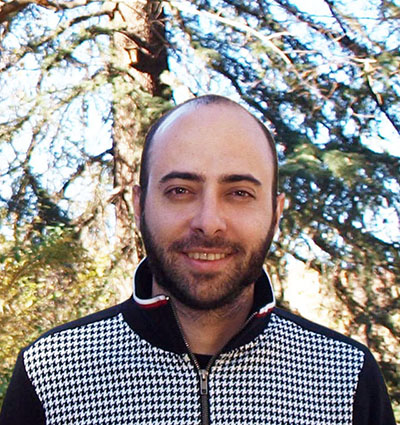
28th Nov 2019, 12:30h.
Julio de Vicente: "A general bound for the dimension of quantum behaviours in the prepare-and-measure scenario".
The prepare-and-measure scenario offers the possibility to infer the dimension of an unknown physical system in a device-independent way, i.e. using only raw measurement data with apparatuses regarded as black boxes. We provide here a general lower bound on the dimension necessary to observe arbitrary quantum behaviours in this scenario based on simple matrix analysis. This bound holds even if the preparer and measurer share randomness. This is relevant in scenarios were the parties are free to access this resource or it is not safe to assume that the devices are not correlated. We further use this result to bound the success probability of random access codes in general as a function of the dimension of the quantum systems sent from one party to another and we provide constructions of dimension witnesses.
 21st Nov 2019, 12:30h.
21st Nov 2019, 12:30h.
Andras Molnar: "Matrix Product States: Entanglement, Symmetries, and State Transformations".
We analyze entanglement in the family of translationally invariant matrix product states (MPS). We give a criterion to determine when two states can be transformed into each other by local operations with a nonvanishing probability, a central question in entanglement theory. This induces a classification within this family of states, which we explicitly carry out for the simplest, nontrivial MPS. We also characterize all symmetries of translationally invariant MPS, both global and local (inhomogeneous). We illustrate our results with examples of states that are relevant in different physical contexts.
 7th Nov 2019, 12:30h.
7th Nov 2019, 12:30h.
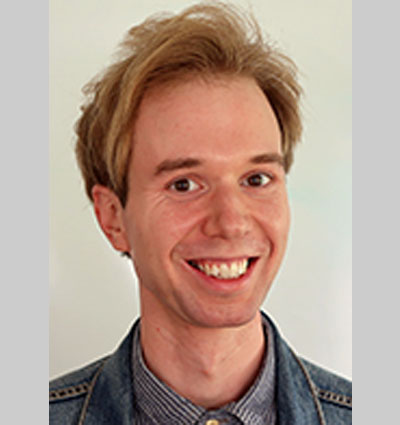
24th Oct 2019, 15:00h.
Nicholas Gauguin Houghton-Larsen
Famously, John Bell discovered in the 1960s that there is a classically observable difference between quantum and classical physics. A somewhat extreme elaboration on this insight, arising in the late 1990s, is the idea that classical observations alone may allow us to infer an essentially complete description of a quantum system. This phenomenon is referred to as “rigidity”, or “self-testing”. Apart from being of foundational interest, it also has important applications in cryptographic and adversarial scenarios.
I will give an open-ended talk about a new mathematical framework for understanding the phenomenon of rigidity, which exhibits it as an operational concept rooted in the notion of side-information. Within this framework, one is naturally led to consider certain Stinespring dilations of the channels describing the classical input-output behaviour in a Bell-scenario, and I will state (and possibly sketch a proof of) a theorem characterising such Stinespring dilations in terms of non-signalling constraints.
Helpful preliminaries:
Knowing what classical channels (= Markov kernels) and quantum channels (= completely positive trace-preserving maps) are, familiarity with Stinespring’s dilation theorem. I will mostly discuss the finite(-dimensional) versions.

25th Jun 2019, 15:00h.
Giannicola Scarpa: "Agreement and Disagreement in a Quantum World".
Joint work (in progress) with: Adam Brandenburger (NYU), Patricia Contreras-Tejada (ICMAT-UCM), Pierfrancesco La Mura (HHL Leipzig), and Kai Steverson (NYU).
The Agreement Theorem (Aumann, 1976) states that if two Bayesian agents start with a common prior, then they cannot have common knowledge that they hold different posterior probabilities of some underlying event of interest. In short, the two agents cannot ‘agree to disagree.’
We investigate the epistemics of the quantum world and ask, in particular: What conditions lead to agreement or allow for disagreement in a non-classical setting? We study common certainty of disagreement: a weaker requirement than common knowledge, but still classically impossible. We generalise the classical setting in two different ways:
(i) A quantum setup which exhibits common certainty of disagreement about a global property of the state;
(ii) A non-signalling setup which exhibits common certainty of disagreement about fully correlated local properties.
We relate our findings to the recent inconsistency result by Frauchiger and Renner (2018).
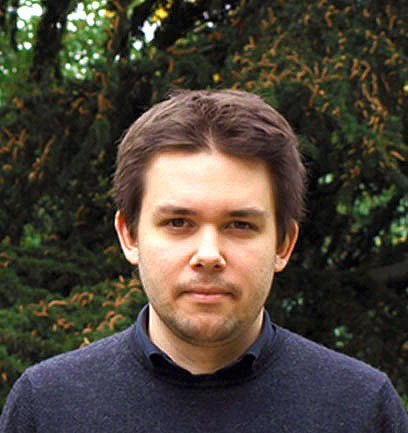 11th Jul 2019, 15:00h.
11th Jul 2019, 15:00h.
Discretizing space-time in quantum physics is a natural step towards modelling many-body systems. If a strict bound on the speed of information propagation is also demanded we obtain Quantum Cellular Automata (QCA), which originally arose as an alternative paradigm for quantum computation, although more recently they have been proposed as models of other systems. There is a well known index theory to classify strictly local QCA in one dimensional spaces but, very recently, it has been extended to higher dimensional systems [arxiv.org/abs/1902.10285]. This classification is complete for two dimensional QCA on finite lattices and depends on the topology of the system, but it is not expected to extend to higher dimensional lattices. I will introduce some ideas that are central to the algebraic topology theory applied to this problem and sketch the proofs of the aforementioned results.
 4th Jul 2019, 15:00h.
4th Jul 2019, 15:00h.
Antonio Pérez: "Alternating projections and spectral gap".
Basing on a recent paper by M. Kastoryano and A. Lucia (2018) we will comment on a strategy for proving spectral gap for a certain class of Hamiltonians.
 2nd Apr 2019, 15:00h.
2nd Apr 2019, 15:00h.
Carlos Palazuelos: "Grothendieck’s inequality and XOR games".
We will explain different versions of Grothendieck’s inequality and their applications in the study of classical and quantum XOR games.

26th Mar 2019, 15:00h.
Martin Hebenstreit: "Classically simulable quantum computation & matchgate circuits".
Although it is believed that quantum computation cannot be classically efficiently simulated in general, there exist certain restricted classes of quantum circuits for which classical simulation is indeed possible. The most prominent example are the Clifford circuits. Here, we consider another such class, the so-called matchgate circuits (MGCs) [1,2]. MGCs can be classically efficiently simulated and moreover, performed as a compressed quantum computation, i.e., the computation can be performed on an quantum computer using exponentially fewer qubits and only polynomial overhead in runtime [3]. We elaborate on and extend recent results [4] on classical simulability of MGCs. To this end, we discuss the notion of magic states in this context.
[1] L. Valiant, SIAM J. Computing 31, 1229 (2002), B. Terhal and D. DiVincenzo, Phys. Rev. A 65, 032325 (2002)
[2] R. Jozsa and A. Miyake, Proc. R. Soc. A 464, 3089 (2008)
[3] R. Jozsa, B. Kraus, A. Miyake, J. Watrous, Proc. R. Soc. A 466, 809 (2010)
[4] D. J. Brod, Phys. Rev. A 93, 062332 (2016)
Part III of QIP2019 talks.
Cambyse Rouzé: " Functional inequalities and strong converses in quantum information theory".
Quantum channel capacities, defined as the asymptotic optimal rates ofclassical, quantum or private information that can be reliably sent perchannel use, are generally characterized by expressions involving entropicquantities. Contrary to their classical analogue, these expressions usuallyinvolve a quantity optimized over an unbounded number of uses of thechannel. This prevents the existence of a general algorithm to computethem, even in the simplest case of the depolarizing channel. Hence,estimating these expressions remains one of the key challenges of quantuminformation theory. A bound on a capacity is said to satisfy a strongconverse property if the error made by trying to reach a rate above itconverges to one in the limit of a large number $n$ of uses of the channelat hand.An important class of channels is that of quantum Markov semigroups (QMS).These models are most relevant to capture the time-dependent, memorylessinteraction between a system and its environment. In this talk, we willdiscuss the interplay between QMS theory and the strong converse propertiesof various quantum information theoretical tasks. First, we will derivetime-dependent strong converse bounds for the capacities of a large classof quantum Markov semigroups. These bounds are expressed in terms of themixing time of an associated classical Markov process. In the second halfof the talk, we will show a new promising technique to derive finite $n$strong converse bounds, mainly focusing on the framework of binaryhypothesis testing. Here, the technique relies on a functional inequalitysatisfied by the generalized quantum depolarizing semigroup, namely thetensorization of its reverse hypercontractivity.This talk is based on an article (arXiv:1804.10100) that is joint work withSalman Beigi and Nilanjana Datta, as well as on a paper in preparation withIvan Bardet, Marius Junge, Nicholas Laracuente and Daniel Stilck Franca.
Part II of QIP2019 talks.
Urmila Mahadev: "Classical Verification of Quantum Computation".
Special seminar where we will watch a plenary (invited) talk from QIP 2019.
Cécilia Lancien: " Some properties of random MPS and PEPS."
This talk will be based on ongoing work with David Perez-Garcia, which was initially motivated by the following general problem: which properties of MPS and PEPS are 'generic' and which are on the contrary 'exceptional'? To get towards an answer to this question, our approach consists in constructing (as physically relevant as possible!) toy models of random MPS and PEPS and studying their typical features. As a first result we show that the associated random transfer operators have with high probability a large spectral gap. This imples that our random MPS and PEPS exhibit with high probability an exponential decay of correlation at a high rate. The main question which is still under current investigation is whether it can also be proved that the corresponding random parent Hamiltonians are with high probability gapped.
 5th Feb 2019, 15:00h.
5th Feb 2019, 15:00h.
Patricia Contreras: "A resource theory of entanglement with a unique multipartite maximally entangled state".
Entanglement theory is formulated as a quantum resource theory in which the free operations are local operations and classical communication (LOCC). This defines a partial order among bipartitepure states that makes it possible to identify a maximally entangled state, which turns out to be the most relevant state in applications. However, the situation changes drastically in the multipartiteregime. Not only do there exist inequivalent forms of entanglement forbidding the existence of a unique maximally entangled state, but recent results have shown that LOCC induces a trivial ordering:almost all pure entangled multipartite states are incomparable (i.e. LOCC transformations among them are almost never possible). In order to cope with this problem we consider alternativeresource theories in which we relax the class of LOCC to operations that do not create entanglement. We consider two possible theories depending on whether resources correspond to multipartite entangledor genuinely multipartite entangled (GME) states and we show that they are both non-trivial: no inequivalent forms of entanglement exist in them and they induce a meaningful partial order (i.e.every pure state is transformable to more weakly entangled pure states). Moreover, we prove that the resource theory of GME that we formulate here has a unique maximally entangled state, thegeneralized GHZ state, which can be transformed to any other state by the allowed free operations. Work in progress: exploring the asymptotic reversibility of the theory.
 29th Jan 2019, 15:00h.
29th Jan 2019, 15:00h.
Abderramán Amr Rey: "Optimal bounds for Bell violations by non-signalling probability distributions".
In this talk we will give a characterization of the set of bipartite non-signalling probability distributions in terms of tensor norms. Using this characterization we will give optimal upper and lower bounds on Bell inequality violations when non-signalling distributions are considered. Interestingly, our upper bounds show that non-signalling Bell inequality violations cannot be significantly larger than quantum Bell inequality violations.

23rd Jan 2019, 12:30h.
Ángela Capel: "Entropy decays for 1D quantum Gibbs samplers".
For the study of quantum dissipative evolutions, one can use quantum functional inequalities (such as logarithmic Sobolev inequalities) to find bounds on the mixing time of the evolution under the Markov approximation. In this talk, we will discuss a new method in 1D to prove that a quantum Markov semigroup has a positive logarithmic Sobolev constant and we will give sufficient static conditions on the Gibbs state of a local, commuting Hamiltonian to use this method to get new results for the heat-bath dynamics.
This is a joint work with Ivan Bardet, Nilanjana Datta, Angelo Lucia, David Pérez-García and Cambyse Rouzé.
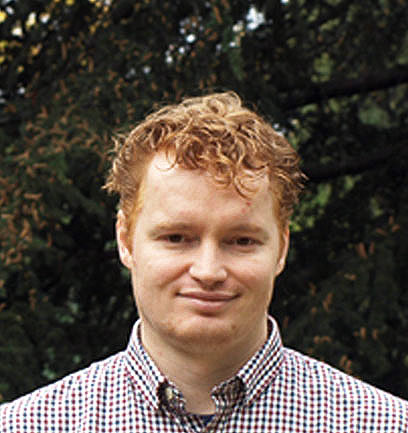
16h Jan 2019, 12:30h.
Pieter Naaijkens: "How to describe anyons?" Part III
I will continue the discussion of how to describe anyons. This talk will be more technical. In particular, I want to show how you get from the representations satisfying the selection criterion to the modular tensor category describing the anyons. I will also discuss our stability result, which says that this modular tensor category is invariant once you start perturbing the system (without closing the gap).

9h Jan 2019, 12:30h.
Pieter Naaijkens: "How to describe anyons?" Part II
One of the interesting properties of topologically ordered quantum spin systems with long range entanglement is that they give rise to anyonic excitations. A natural question is: how can we describe and find the properties of these anyons? In this talk I will give an overview of the approach that my coworkers any I have been developing, using techniques from operator algebra. I will focus on the main concepts and will discuss some of the advantages of our approach. If time permits, I will also discuss briefly more recent results on the stability of (the properties of) the anyons.

19h Dec 2018, 12:30h.
Álvaro M. Alhambra: "Covariant error-correcting codes with finite-sized reference frames"
Following the recent introduction of the task of reference frame errorcorrection, we show how, by using reference frame alignment,near-perfect code with a continuous Abelian group of transversal logicalgates can be constructed. With this we explore a way of circumventingthe no-go theorem of Eastin and Knill, which states that for codes inwhich local errors are correctable, the group of transversal gates mustbe of finite order. We are able to do this by introducing a small erroron the decoding procedure that falls with the dimension of the framesused. The asymptotic scaling of the error is shown to almost saturateexisting fundamental bounds. The scheme can also be extended to errorsbeyond erasure at known locations, and we show how to achieve this bysimple classical error correction schemes on the reference frames.
Joint work with Mischa Woods.

12h Dec 2018, 12:30h.
Pieter Naaijkens: "How to describe anyons?" Part I
One of the interesting properties of topologically ordered quantum spin systems with long range entanglement is that they give rise to anyonic excitations. A natural question is: how can we describe and find the properties of these anyons? In this talk I will give an overview of the approach that my coworkers any I have been developing, using techniques from operator algebra. I will focus on the main concepts and will discuss some of the advantages of our approach. If time permits, I will also discuss briefly more recent results on the stability of (the properties of) the anyons.

28th Nov 2018 15:00h.
Frank Verstraete: "Mapping Topological to Conformal Field Theories through strange Correlators".
IMPORTANT: This seminar will take place in the ICMAT, Sala Naranja.

7th Nov 2018, 12:30h.
David Pérez García: "Classification of phases for mixed states via fast dissipative evolution".
We propose the following definition of topological quantum phases valid for mixed states: two states are in the same phase if there exists a time independent, fast and local Lindbladian evolution driving one state into the other. The underlying idea, motivated by König and Pastawski in 2013, is that it takes time to create new topological correlations, even with the use of dissipation. We show that it is a good definition in the following sense: (1) It divides the set of states into equivalent classes and it establishes a partial order between those according to their level of "topological complexity". (2) It provides a path between any two states belonging to the same phase where observables behave smoothly. We then focus on pure states to relate the new definition in this particular case with the usual definition for quantum phases of closed systems in terms of the existence of a gapped path of Hamiltonians connecting both states in the corresponding ground state path. We show first that if two pure states are in the same phase in the Hamiltonian sense, they are also in the same phase in the Lindbladian sense considered here. We then turn to analyse the reverse implication, where we point out a very different behaviour in the case of symmetry protected topological (SPT) phases in 1D. Whereas at the Hamiltonian level, phases are known to be classified with the second cohomology group of the symmetry group, we show that symmetry cannot give any protection in 1D in the Lindbladian sense: there is only one SPT phase in 1D independently of the symmetry group. We finish analysing the case of 2D topological quantum systems. There we expect that different topological phases in the Hamiltonian sense remain different in the Lindbladian sense. We show this formally only for the Zn quantum double models.
 24th Oct 2018, 12:30h.
24th Oct 2018, 12:30h.
Antonio Pérez: "A note on Hamiltonians in 1D with exponential decay of interactions".
I will outline an ongoing joint work with David concerning Hamiltonians with exponential decay of interactions, some advances and prospective results, as well as an application to PEPS.
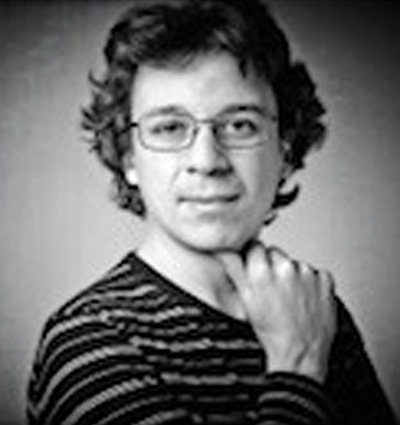 10th Oct 2018, 12:30h 11:00h.
10th Oct 2018, 12:30h 11:00h.
Angelo Lucia: "Tensor networks and tensor geometry."
Tensor networks states provide a successful description of many-bodyquantum states, between other reasons because they allow for efficientnumerical computations. Most of the known types of tensor networkstates are based on a network of maximally entangled states, but in theliterature more general cases have been considered, where other multi-partite entangled states are shared between sites.In this talk I will connect these constructions with the geometry ofentangled states, and show how to use geometrical tools in order toobtain different (and sometimes more efficient) representations oftensor network states. Based on arXiv:1809.08185.
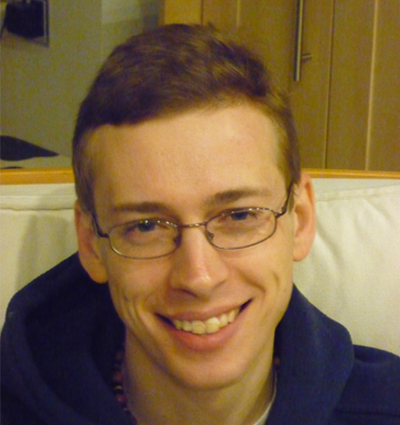 26th Sep 2018, 12:30h.
26th Sep 2018, 12:30h.
Toby Cubitt: "Hamiltonian simulation, Jordan algebras, and C* representation theory"
 11th Jul 2018, 15:00h.
11th Jul 2018, 15:00h.
Abderramán Amr Rey: "Mutually unbiased bases and applications".
The talk will be based on the study of mutually unbiased bases, its existence and construction, and some of its applications, like https://arxiv.org/abs/1202.5058, where the authors use them to detect entanglement.
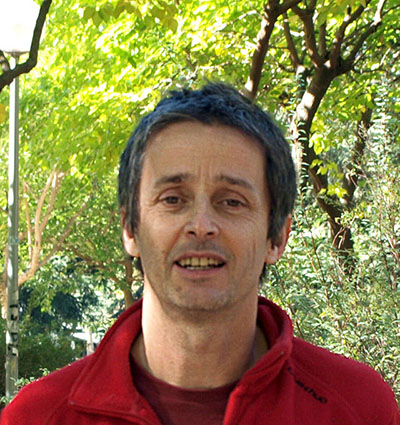 20th Jun 2018, 15:00h.
20th Jun 2018, 15:00h.
Ignacio Villanueva: "Towards an equivalence between maximal entanglement and maximal quantum nonlocality".
The talk will be based on https://arxiv.org/pdf/1802.09982.pdf,where the authors search for an equivalence, in probability on the measurement settings, between entanglement and non-locality.
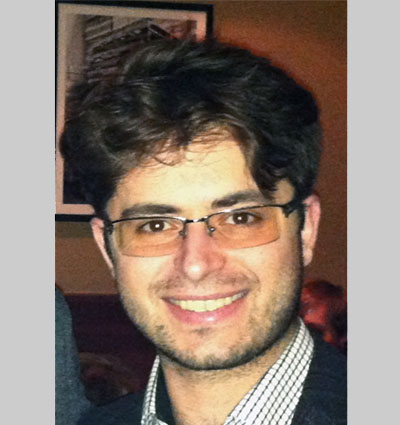 13th Jun 2018, 15:00h.
13th Jun 2018, 15:00h.
Ramis Movassagh: "Supercritical entanglement: Counterexample of the area law".
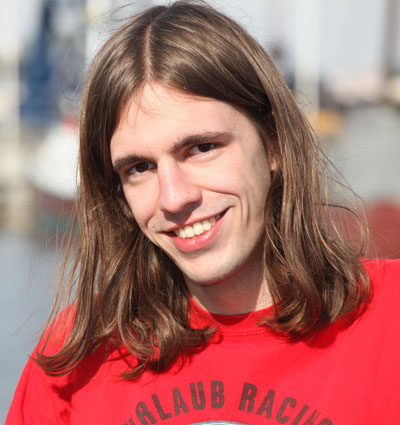 6th Jun 2018, 15:00h.
6th Jun 2018, 15:00h.
Andreas Bluhm: "Joint measurability of quantum effects and the matrix diamond".
In this work, we investigate the joint measurability of quantum effects and connect it to the study of free spectrahedra. Free spectrahedra typically arise as matricial relaxations of linear matrix inequalities. We find that joint measurability is equivalent to the inclusion of the matrix diamond, which is a matricial relaxation of the l_1 - ball, into free spectrahedra defined by the effects under study. Further, we show that this connection allows us to use results about inclusion constants from free spectrahedra to quantify the degree of incompatibility of quantum measurements. Finally, this allows us to completely characterize the case in which the dimension is exponential in the number of outcomes.

30th May 2018, 15:00h.
José Carrasco: "Computing the spectra of a quantum system: the importance of ordering."
We shall discuss how the ordering of a Schauder basis can reduce the complexity of the problem of computing the spectrum of a quantum system.
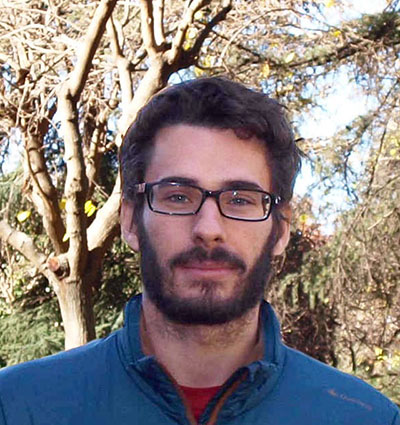 23rd May 2018, 14:45h.
23rd May 2018, 14:45h.
José Garre Rubio: "Normal projected entangled pair states generating the same state".
Tensor networks are generated by a set of small rank tensors and define many-body quantum states in a succinct form. The corresponding map is not one-to-one: different sets of tensors may generate the very same state. A fundamental question in the study of tensor networks naturally arises: what is then the relation between those sets? The answer to this question in one dimensional setups has found several applications, like the characterization of local and global symmetries, the classification of phases of matter and unitary evolutions, or the determination of the fixed points of renormalization procedures. Here we answer this question for projected entangled-pair states (PEPS) in any dimension and lattice geometry, as long as the tensors generating the states are normal, which constitute an important and generic class. https://arxiv.org/pdf/1804.04964.pdf
 16th May 2018, 15:00h.
16th May 2018, 15:00h.
Carlos Palazuelos: "Quantum Query Algorithms are Completely Bounded Forms".
In this seminar I will explain a new characterization of quantum query algorithms in terms of polynomials satisfying a certain (completely bounded) norm constraint. Based on this, I will obtain a refined notion of approximate polynomial degree that equals the quantum query complexity. Using this characterization, I will show that many polynomials of degree at least 4 are far from those coming from quantum query algorithms.

4th May 2018, 12:00h.
Dmitry Kravchenko: "Quantum-entangled decisions".
We will illustrate some possibilities and peculiarities of quantum decisions in two different contexts. One of them is connected to EWL scheme, a pioneering framework for quantum games, where quantum entanglement is carried out by a trusted system or authority. We shall shortly observe the seminal example of its application for Prisoners' dilemma, and propose a similar albeit better scheme for quantum voting. The other context is free from the need to trust a quantum-processing authority. We shall discuss the potential effect of exploiting quantum entanglement in Bayesian games and possibly some other types of games.
 25th Apr 2018, 15:00h.
25th Apr 2018, 15:00h.
Patricia Contreras: "There is no maximally entangled state of three qubits in any resource theory of entanglement".
Entanglement theory is a resource theory for parties constrained to LOCC manipulation. However, recent results have shown that this theory suffers from severe limitations in the multipartite regime. We study an alternative theory by considering as free operations the largest set that still induces a well-defined resource theory of entanglement. Despite certain negative features disappearing, we show that there is still no maximally entangled state of three qubits even in this extended regime.
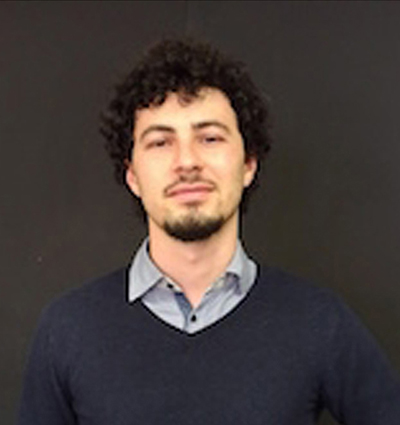 18th Apr 2018, 15:00h.
18th Apr 2018, 15:00h.
Ludovico Lami (University of Nottingham): "Tensor norms and general probabilistic theories".
I will start with a brief introduction to tensor norms, and then move on to a recap of the formalism of general probabilistic theories, with an eye towards bipartite systems. The study of state discrimination problem subjected to locality constraints will lead us to identify a deep and intriguing problem in Banach space theory. This asks for the minimum across all pairs of Banach spaces of fixed dimension of the maximal projective/injective ratio on the tensor product. Despite the remarkable simplicity of its formulation, this problem had not been investigated before. I will then present our progress towards a full solution.

11th Apr 2018, 15:00h.
Ángela Capel: "Quantum conditional relative entropy".
The existence of a positive log-Sobolev constant implies a bound on the mixing time of a quantum dissipative evolution under the Markov approximation. For classical spin systems, such constant was proven to exist, under the assumption of a mixing condition in the Gibbs measure associated to their dynamics, via a quasi-factorization of the entropy in terms of the conditional entropy in some sub-$sigma$-algebras. In this work we analyze analogous quasi-factorization results in the quantum case. For that, we define the quantum conditional relative entropy and prove several quasi-factorization results for it. As an illustration of their potential, we use one of them to obtain a positive log-Sobolev constant for the heat-bath dynamics with product fixed point.
Joint work with Angelo Lucia and David Pérez García.

4th Apr 2018, 15:00h.
Carlos González: "History-state Hamiltonians are critical".
All Hamiltonian complexity results to date have been proven by constructing a family of local Hamiltonians whose ground states (or other low-energy states) are ``computational history states'', which encode any quantum computation as a superposition over the history of the computation. We prove that all history-state Hamiltonians must be gapless, with a spectral gap that closes at least as fast as 1/T with circuit size T (number of gates). More precisely, for any circuit-to-Hamiltonian mapping, there is a growing sequence of circuits that maps to a growing sequence of Hamiltonians with O(1/T) spectral gap. This suggests that QMA-hardness proof for gapped Hamiltonians, or BQP-completeness of adiabatic quantum computation with constant gap, would require a completely new technique. Joint work with T. Cubitt.
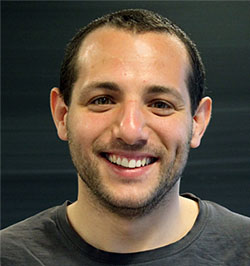 21st Mar 2018, 15:00h.
21st Mar 2018, 15:00h.
Roberto Ferrara: "Random private quantum states".
The study of properties of randomly chosen quantum states has in recent years led to many insights into quantum entanglement. In this work, we study private quantum states from this point of view. Private quantum states are bipartite quantum states characterized by the property that carrying out a simple local measurement yields a secret bit. This feature is shared by the maximally entangled pair of quantum bits, yet private quantum states are more general and can in their most extreme form be almost bound entangled.In this talk I will go trough the basics of entanglement distillation and key distillation (QKD) from the point of view of entanglement measures, leading to distillable entanglement (E_D) and distillable (K_D). I will then introduce private states and their relation to distillable key. Then, I will present our results in which we study the entanglement properties of random private quantum states and show that they are hardly distinguishable from separable states and thus, despite containing one bit of key, have low repeater key (R_D, a natural extension of the distillable key to a repeater setting).
 14th Mar 2018, 15:00h.
14th Mar 2018, 15:00h.
Sofyan Iblisdir: "Computational complexity of PEPS zero testing".
Computational complexity of PEPS zero testingAbstract: Projected entangled pair states aim at describing lattice systems in two spatial dimensions that obey an area law. They are specified by associating a tensor with each site, and they are generated by patching these tensors. We consider the problem of determining whether the state resulting from this patching is null, and prove it to be NP-hard; the PEPS used to prove this claim have a boundary and are homogeneous in their bulk. A variation of this problem is next shown to be undecidable. These results have various implications: they question the possibility of a 'fundamental theorem' for PEPS; there are PEPS for which the presence of a symmetry is undecidable; there exist parent hamiltonians of PEPS for which the existence of a gap above the ground state is undecidable. En passant, we identify a family of classical Hamiltonians, with nearest neighbour interactions, and translationally invariant in their bulk, for which the commuting 2-local Hamiltonian problem is NP-complete. Joint work: G. Scarpa, A. Molnar, Y. Ge, J.J. García-Ripoll, N. Schuch, D. Pérez-García, S. Iblisdir (arxiv # 1802.08214).

28th Feb 2018, 15:00h.
Julio de Vicente: "Entanglement distillability beyond LOCC".
The distillability problem asks which quantum states can be transformed by local operations and classical communication (LOCC) into the maximally entangled state with vanishing error in the asymptotic limit of infinitely many copies. While it is known that entangled PPT (with positive partial transposition) states are not distillable, the question of whether non-distillable non-PPT states exist remains unanswered. Given the exceedingly complex structure of LOCC maps, a possible strategy to answer the above question in the affirmative is to find an obstruction to distillation under classes of maps that have LOCC as a subset. In this talk I will present some results and open questions regarding this idea. This is based on joint work with E. Chitambar, M.W. Girard and G. Gour (arXiv:1711.03835).
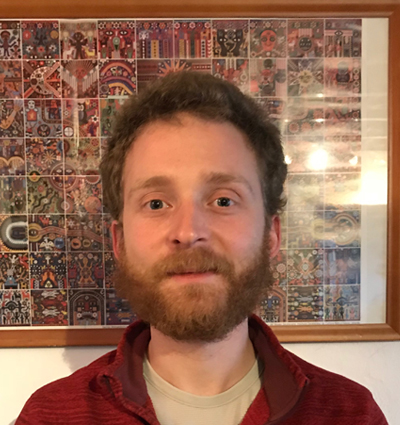
21st Feb 2018, 15:00h.
Ivan Bardet: "Estimating the decoherence time using hypercontractivity for the amalgamated Lp norms".
Environment Induced Decoherence is a physical concept which provides a dynamical explanation to the disappearance of quantum phenomenon in the real world. Intuitively, it states that a quantum system is never per- fectly isolated, so that quantum correlations disappear due to the action of the environment on the system. Focusing on finite-dimensional quantum systems undergoing Markovian evolutions, we will discuss how a notion of hypercontractivity with respect to certain norms can be exploited to obtain estimate of the decoherence time, or even prove (exponentially) rapid deco- herence. Surprisingly, we shall show different atypical behaviors compared to the known primitive case.
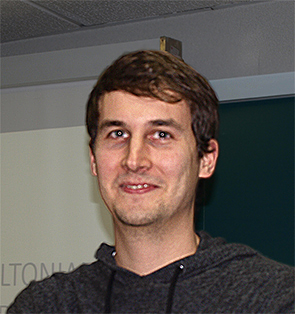
14th Feb 2018, 15:00h.
Johannes Bausch (Cambridge): "Classifying Data using Hamiltonian Ground States".
The goal of this work is to build a "quantum neural network", train it on some actual data and then test its performance on a classification task. We use Microsoft’s quantum simulator, LIQUi|>, to construct local Hamiltonians that can encode trained classifier functions in their ground states, and which can be probed using simulated annealing. We propose a training scheme which is completely closed-off to the environment and which does not depend on external measurements, avoiding unnecessary decoherence during the annealing procedure. For a network of size n, the trained network can be stored as a list of O(n) coupling strengths. We address the question of which interactions are most suitable for the classification task, developing a number of qubit-saving optimizations for the training procedure. Furthermore, a small neural network to classify colors into red vs. blue is trained and tested, and benchmarked against the annealing parameters.

7th Feb 2018, 15:00h, ROOM 209.
Giannicola Scarpa (UCM): "A quantum-inspired model in decision theory".
Decision theory is a branch of economics and psychology. Closely related to the field of game theory, decision theory is concerned with the choices of individual agents while game theory is concerned with interactions of agents whose decisions affect each other. A typical assumption in decision theory is rationality of the agents: they are capable of calculating the choice that maximizes their expected utility, given their knowledge of the situation. However, experiments show that people's behaviours often are not in accordance with rationality. Several ad-hoc models have been developed to explain these phenomena. (For example, an important model is Daniel Kahneman's prospect theory, which uses concepts like risk aversion to justify the apparent irrationality.) More recently, a quantum-like model of cognition surfaced, mostly inspired by the apparent contextuality of the agent's preferences in experiments. One important aspect of this quantum-based approach is that it works on abstract cognitive entities: it is used as a statistical tool with no claims of connection to physical systems. In this talk, we explain the basics of this quantum-like model and show an example of its application.
Cécilia Lancien (UCM-Maths): " Approximating any quantum channel by a quantum channel with few Kraus operators."
In this talk I will be addressing the following problem: given a quantum channel with potentially many Kraus operators, is it possible to approximate it by one with much fewer Kraus operators (in the sense that, for any input state, the output states of the two channels should be close to one another)? The answer to this question turns out to be yes: any quantum channel on a d-dimensional system can be approximated by one with order d.log(d) Kraus operators, hence much less than d^2 (which is the number of Kraus operators that might be needed to exactly describe the channel).
 30th Nov 2017, 14:30h.
30th Nov 2017, 14:30h.
Andras Molnar (MPQ-Garching, Germany): " Canonical forms for G-injective PEPS".

23rd Nov 2017, 14:30.
Andrea Coser (UCM): " A tentative definition of phases for open quantum systems".
I will talk about some work in progress with David. I will state a possible definition of phases by means of non-unitary evolution governed by a local Liouvillian. Such definition is therefore valid for both pure and mixed states. After that, I will present some known and some new results in support of our proposal, as well as some open problems. In particular I will focus on the equivalence of our definition with the usual one for pure states, which involves gapped paths of local Hamiltonians.

16th Nov 2017, 14:30h, ROOM 126.
Alonso Botero (U. Andes, Colombia): "Universal and distortion-free multipartite entanglement concentration of multiqubit states in the W class".
Haysahi and Matusmoto’s concentration protocol takes $n$ copies of a bipartite pure state and, via local measurements of irreducible characters of the permutation group $S_n$, produces a maximally entangled state between spaces of dimensions $\sim 2^{n E}$, where $E$ is the entanglement entropy of the input state. The protocol is distortion-free in that it always produces a maximally entangled state, and universal in that no prior knowledge of the input state is necessary. In this talk we discuss some of the implications that follow from extending the protocol to the multipartite setting, using a combination of local $S_n$ character measurements and ancillary local measurements. We will first show how, as in the bipartite case, the protocol is able to produce a high-dimensional, maximally-entangled multipartite state, with one-party marginal entropies proportional to those of the input state. However, the protocol is generally not universal in that for the same measurement outcomes, the output state will still depend on the input state. Our main result is that the exceptionally, the protocol turns out to be universal within the multiqubit W class, so that as in the biparatite version, the output from any state in the class is a unique, maximally-entangled state for each given set of measurement outcomes. We will show how the universality follows from a multiplicity-free property of the so-called SLOCC covariants, when restricted to W states. Finally, we will discuss some open questions regrading the output states produced by the protocol.
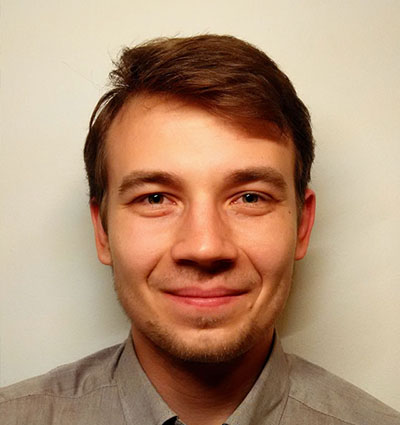
7th Nov 2017, 11:30h.
Aleksander Marcin Kubicki: "Optimality of Programmable Quantum Processors".
In our next seminar, I will talk about the necessary resources to implement some quantum circuits referred as Programmable Quantum Processors(PQPs)[1]. PQPs can be defined as a computational model which intends to quantize the idea of von Neumann architectures. I will exemplify the concept with some known constructions and discuss a result we obtained about the minimal requirements to build such a machine.
[1] Programmable Quantum Gate Arrays, Nielsen, M. A. and Chuang, Isaac L., Phys. Rev. Lett., 79, 2 (1997)

31st Oct 2017, 11:30h.
David Pérez García: "The fundamental theorem of Matrix Product States".
Given a Tensor Network State, which is the freedom one has in the tensors to obtain the same state? The fundamental theorem of Matrix Product States solves this for the 1D case. I will comment on this result and its numerous applications, as well as on some 2D generalizations.

15th Jun 2017, 13:00h.
Antonio Pérez (Universidad de Murcia): "Analysis of real functions on Boolean cubes".
Functions of the type f : {-1,1}n R arise in a wide variety of fields: theoretical computer sciences, social theory, combinatorics, random graph theory, etc. The systematic study of these functions is carried out through their Fourier-Walsh expansion, a canonical representation which let us combine tools from Fourier analysis, polynomials and multilinear forms.
In this talk, we will explain some basics on the subject and discuss some recent results concerning the Fourier spectrum of functions of degree d obtained in a joint work with A. Defant (Carl von Ossietzky University in Oldenburg, Germany) and M. Mastylo (Adam Mickiewicz University in Poznan, Poland).

26th April 2017, 15:30h-17:00h.
José Garre Rubio (UCM/ICMAT): "Symmetry reduction induced by anyon condensation: a tensor network approach".
In this talk I will present the paper ArXiv:1702.08759 done with Sofyan and David. The work is about topological phase transitions; the ones which are related to changes in the properties of quasi-particle excitations (anyons). We study this phenomenon in the framework of projected entanglement pair states (PEPS) and show how condensing and confining anyons reduces a local gauge symmetry to a global on-site symmetry. We also study the action of this global symmetry over the quasiparticle excitations. As a byproduct, we observe that this symmetry reduction effect can be applied to one-dimensional systems as well.

5th April 2017, 15:30h-17:00h.
Ángela Capel Cuevas (ICMAT): "Quasi-factorization of the quantum relative entropy".
In this talk, given a bipartite Hilbert space and two states on it, we introduce the concept of their conditional relative entropy on one of the components of the Hilbert space in two different ways. For both definitions, we present a quasi-factorization result of the relative entropy, i.e., an upper bound for the relative entropy of two states in terms of the sum of two conditional relative entropies of the same states in two different regions and a factor concerning the correlation between both regions. If time allows it, we will show their connection with some relevant problems in quantum information theory and a possible application in quantum many body systems.
Based on a joint work with Angelo Lucia and David Pérez-García.

29th Mar 2017, 15:30h-17:00h.
Javier Rodríguez-Laguna, Dpto. Física Fundamental (UNED): "Inhomogeneity and Entanglement: from Unruh to the Rainbow".
Introducing inhomogeneity in the couplings of a local Hamiltonian can sometimes be understood as a change of metric. So, we will start by showing that a linear growth of the hoppings can be read as a change to Rindler spacetime, where we can see the Unruh radiation. Then, we will consider spaces with a random metric, to see that disorder and entanglement can get along quite well. Then, we will ask the question: can we engineer space in order to obtain any sort of entanglement pattern?

22nd Mar 2017, 15:30h-17:00h.
Ignacio Villanueva (UCM): "In the search for a total function with exponential separation between quantum and classical communication complexity".
Communication complexity is a very basic model in computational complexity, with many applications in computer science. Understanding the maximal possible difference between quantum communication and classical communication complexity is one of the open questions in the area. I will review the few known examples of partial functions (functions with a promise) achieving exponential separation between quantum and classical communication complexity. Then I will present a function we have studied exhibiting certain "exponential separation behaviour”. I will also comment on our so far unsuccessful attempts to extract from it a total function with exponential separation.

15th Mar 2017, 15:30h-17:00h.
Ludovico Lami (UAB): "Ultimate data hiding in quantum mechanics and beyond".
Data hiding in quantum mechanics was originally discovered in [1] (see also [2]). Since we are interested in studying the intrinsic limits of this phenomenon, I will start by introducing a more fundamental framework known as general probabilistic theories (GPTs) [3], which is an abstract way to generalise quantum probability rules as to encompass only the most basic physical requirements. Within the realm of GPTs, we will define what we mean by data hiding using the language of norms discussed in [4]. By making an unexpected connection with Grothendieck’s theory of tensor norms, we will study the ultimate limits of this non-classical phenomenon as arising from only basic physical constraints. Quantum mechanics is found to have a data hiding efficiency of the order of the square root of the maximal one. In other words, Nature is non-classical, but not as non-classical as it could have been.
Reference paper: arXiv:1703.03392
[1] B. M. Terhal, D. P. DiVincenzo, and D. W. Leung, Hiding bits in Bell states, Phys. Rev. Lett. 86, 5807 (2001); arXiv:quant- ph/0011042.
[2] Chapter 4 of Eggeling’s PhD thesis http://d-nb.info/967787947/34.
[3] H. Barnum, J. Barrett, M. Leifer, and A. Wilce, Teleportation in general probabilistic theories, Proceedings of Symposia in Applied Mathematics 71, 25-48 (2012); arXiv:0805.3553 (2008).
[4] W. Matthews, S. Wehner, and A. Winter, Distinguishability of quantum states under restricted families of measurements with an application to quantum data hiding, Comm. Math. Phys. 291(3), 813-843 (2009); arXiv:0810.2327.

1st Mar 2017, 15:30h-17:00h.
Cécilia Lancien (UCM): "Random quantum correlations are generically non-classical".
Two observers performing binary outcome measurements on subsystems of a global system may obtain more strongly correlated results when they have a shared entangled quantum state than when they only have shared randomness. This well-known phenomenon of Bell inequality violation can be precisely characterized mathematically. Indeed, being a classical or a quantum correlation matrix exactly corresponds to being in the unit ball of some tensor norms. In this talk, I will start with explaining all this in details. I will then look at the following problem: given a random matrix of size n, can one estimate the typical value of its "classical" and "quantum" norms, as n becomes large? For a wide class of random matrices, the answer is yes, and shows a separation between the two values. This result may be interpreted as follows: in a typical direction, the borders of the sets of classical and quantum correlations do not coincide. On the technical side the ingredients that I will need include: tensor norms on Banach spaces, random matrix theory, concentration of measure in high dimension... But hopefully no prerequisite on any of these topics will be necessary to understand my talk!
Based on joint work with Carlos Gonzalez-Guillen, Carlos Palazuelos and Ignacio Villanueva (arXiv: 1607.04203).

22nd Feb 2017, 15:30h-17:00h.
Giannicola Scarpa (UCM): "A cryptographic application of matrix product states".
Obfuscation of classical programs is a very important open problem. It is the task of making a computer code unintelligible while keeping its functionality and efficiency intact. Some people describe it as the “holy grail” of modern cryptography. We explain our work in progress toward contributing to the quest: we identify a (small) class of quantum circuits that can be obfuscated thanks to its “matrix product state” form. The class is inspired by Richard Jozsa’s work on classical simulation of quantum circuits. Next, we ask our main open question: how to extend the obfuscation to a meaningful class of classical circuits? Are we are epsilon-close to the answer?
Joint work with Juan José García Ripoll, Sofyan Iblisdir and David Pérez-García.
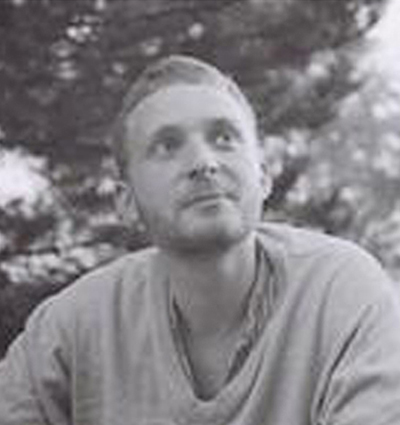
15th Feb 2017, 15:30h-17:00h.
Ivan Bardet (Université Lyon 1): "Estimating the speed of decoherence using Quantum Functional Inequalities".
Environment Induced Decoherence is a physical concept which gives a dynamical explanation to the disappearance of quantum phenomenon in the real world. Intuitively, it states that a quantum system is never isolated, so that quantum correlations disappear due to the action of the environment on the system. Focusing on finite-dimensional quantum systems undergoing Markovian evolutions, we propose natural generalizations of certain non-commutative functional inequalities that are adapted to the study of decoherence.

19th Jan 2017, 10:00h-11:00h.
Patricia Contreras Tejada (UCM): " Single-world interpretations of quantum theory can be self-consistent: a response to Frauchiger and Renner".
Frauchiger and Renner (arXiv:1604.07422v1) tackle the measurement problem of quantum theory by providing a (physically realisable) thought experiment which allegedly renders single-world quantum theory inconsistent. I will present an argument which (I claim) renders the proof unsound, and, if time allows, I will review decoherence theory as the way to make quantum theory consistent with a single observed world. The main aim of the seminar is for all of us to discuss measurement in quantum mechanics both conceptually and physically. Frauchiger and Renner's recent paper, and the two replies that have appeared on the arXiv so far (arXiv:1611.01111 and arXiv:1608.05873), provide and interesting and timely setting to do so.

12th Jan 2017, 10:00h-11:00h.
Andrea Coser (UCM): " Finite Bond Dimension Effects in Tensor Networks States".
In this talk I will discuss some work in progress with Luca Tagliacozzo on the effects of a finite bond dimension in Tensor Networks States, and in particular in PEPS. We are especially interested in the case of two-dimensional critical systems, and to the question weather such states can be described with a finite bond dimension. I will review some of the main results of the one-dimensional case, which is well understood and for which a lot of numerical evidence has been gathered (L. Tagliacozzo et al. 2008, Pirvu et al. 2012). The two-dimensional case is computationally much more demanding, and no direct numerical data are available. In order to investigate large systems and a wide range of bond dimensions, we resort to fermionic Gaussian states, for which an MPS description can be obtained working only with correlation matrices (Fishman, White 2015).

15th Dec 2016, 12:00h-13:00h.
Carlos Palazuelos (UCM): " On some relations between communication complexity problems and Bell inequality violations".
In this talk we will explain how one can obtain (very large) Bell inequality violations from XOR games for which the use of quantum communication to play them implies an improvement with respect to the use of classical communications. The talk is expected to be much clearer than the abstract.

24th Nov 2016, 10:00h-11:00h.
Carlos Fernández, Cécilia Lancien, Angelo Lucia (UCM): "QMATH kick-off conference: overview of some talks".
During this seminar, we will give a brief overwiew of some of the talks that were given during the quick-off conference of the Copenhagen QMath center (http://qmath.ku.dk/events/conferences/kick-off-conf/).
Cécilia will present a work by S. Jeffery and S. Kimmel, relating the boolean formula satisfaction problem to that of deciding the connectivity of a given planar graph. If time allows (which it probably won't!) she will also mention a work by R. Ferrara and M. Christandl about private and data-hiding quantum states.
Carlos will present a work by D. Frauchiger and R. Renner, showing that a single-world interpretation of quantum theory cannot be self-consistent (in an information theory sense). He might also briefly discuss a work by M. Christandl, P. Vrana and J. Zuiddan on so-called "tensor surgery".
Angelo will present results by K. Molmer and collaborators on how to control quantum systems by repeated interaction, and their experimental implementation as atomic probes monitoring the state of a quantized field in a cavity.

21st Nov 2016, 10:00h-11:00h.
Antonio Peralta (University of Granada): "Tingley's problem for compact operators".
In 1932, S. Mazur and S. Ulam solved a question posed by S. Banach by showing that every surjective isometry between real normed spaces is affine. The result is nowadays called Mazur-Ulam theorem. Many results rely on this contribution, and many consequences have been derived from it. P. Mankiewicz establishes in 1972 a generalization of the Mazur-Ulam theorem by proving that every isometry $T$ of an open connected subset $V$ of a normed linear space X onto an open subset $W$ of a normed linear space $Y$ has a unique isometric extension $tilde T$ of $X$ onto $Y$ such that $tilde T (tx+(1-t)y)=t tilde T (x)+ (1-t)tilde T (y)$ for any real number $t$ and $x,yin X$.
A variant of the Mazur-Ulam theorem for subsets with empty interior was considered by Tingley in 1987. Let $X$ and $Y$ be normed spaces, whose unit spheres are denoted by $S(X)$ and $S(Y)$, respectively. Suppose $f:S(X)to S(Y)$ is a surjective isometry. Tingley proved that a surjective linear isometry $f$ between the unit spheres of two finite dimensional Banach spaces preserves antipodes, that is, $f(-x) = -f(x)$, for every $x$ in $S(X)$. The so-called emph{Tingley's problem} asks wether a surjective linear isometry $f:S(X)to S(Y)$ can be extended to a real-linear (bijective) isometry $T : X to Y$ between the corresponding spaces.
Although, Tingley's problem remains open up today, several positive answers have been obtained for concrete Banach spaces. Affirmative answers to Tingley's problem are known for $ell_p (Gamma)$ (G.G. Ding, 2003-2015), $L^p$-spaces (D. Tan, 2011-2013), $C(X)$ spaces (G.G. Ding, 2003, D. Tan, X. Huang and R. Liu, 2013), finite dimensional polyhedral Banach spaces (V. Kadets and M. Martin, 2012), and finite dimensional C$^*$-alegbras (R. Tanaka, 2016).
We shall present a new positive answer to Tingley's problem in the case of a surjective isometry between the unit spheres of two spaces of compact operators on arbitrary Hilbert spaces. The novelties include a new point of view provided by techniques, developed in setting of C$^*$-algebras and JB$^*$-triples, describing the facial structure of the closed unit ball of these structures.

17th Nov 2016, 10:00h-11:00h.
Aleksander Marcin Kubicki (University of Valencia): "Position Based Cryptography".
In the seminar of this week, I will try to explain what is exactly Position Based Cryptography and how much is known about it. For this, I will elaborate in some detail the papers by H. Burhman etal (arXiv:1009.249) and by S. Beigi and R. Konig (arXiv:1101.1065). Finally, I will spot some interesting questions which are still open and some connections with other areas of Quantum Information and Functional Analysis we are looking for.

10th Nov 2016, 10:00h-11:00h.
David Pérez-García (UCM): "An index theory of quantum cellular automata".
In this talk I will present one of the main results of an “old” paper of Gross, Nesme, Vogts y Werner (arXiv:0910.3675) and explain why I recently became interested in it.
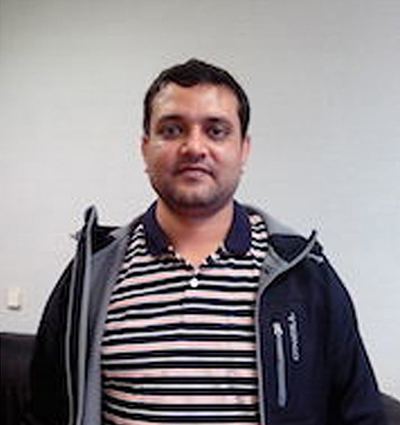
27th Oct 2016, 10:00h-11:00h.
Ashutosh Rai (University of Latvia): "Parity Oblivious d-Level Random Access Codes and Class of Noncontextuality Inequalities".
One of the fundamental results in quantum foundations is the Kochen-Specker no-go theorem. For the quantum theory, the no-go theorem excludes the possibility of a class of hidden variable models where value attribution is context independent. Recently, the notion of contextuality has been generalized for different operational procedures and it has been shown that preparation contextuality of mixed quantum states can be a useful resource in an information-processing task called parity-oblivious multiplexing. Here, we introduce a new class of information processing tasks, namely d-level parity oblivious random access codes and obtain bounds on the success probabilities of performing such tasks in any preparation noncontextual theory. These bounds constitute noncontextuality inequalities for any value of d. For d=3, using a set of mutually asymmetric biased bases we show that the corresponding noncontextual bound is violated by quantum theory. We also show quantum violation of the inequalities for some other higher values of d. This reveals operational usefulness of preparation contextuality of higher level quantum systems.

19th Oct 2016, 10:00h-11:00h.
Julio de Vicente (UC3M): "Pure-state entanglement transformations: SEP, finite-round LOCC and infinite-round LOCC".
The paradigm of local operations and classical communication (LOCC) plays a key role in entanglement theory. First, these provide the most general possible protocols to manipulate this resource in practical scenarios. Second, and most importantly, these constitute the free operations in the resource theory of entanglement. Thus, they induce an operationally meaningful ordering in the set of entangled states and provide the means to construct entanglement measures. However, the set of LOCC maps is mathematically subtle and it is in general hard to characterize when such transformations are possible. Rather than presenting my own results, in this seminar I will put the stress on presenting basic definitions and highlight some techniques and open questions in this context. The idea is to lay the groundwork for discussions with potentially interested people in the group.

13th Oct 2016, 10:00h-11:00h.
Abderramán Amr Rey (UCM): "de Finette reductions for correlations (arxiv 1308.0312)".
When analysing quantum information processing protocols one has to deal with large entangled systems, each consisting of many subsystems. To make this analysis feasible, it is often necessary to identify some additional structure. de Finetti theorems provide such a structure for the case where certain symmetries hold. More precisely, they relate states that are invariant under permutations of subsystems to states in which the subsystems are independent of each other. This relation plays an important role in various areas, e.g., in quantum cryptography or state tomography, where permutation invariant systems are ubiquitous. The known de Finetti theorems usually refer to the internal quantum state of a system and depend on its dimension. Here we prove a different de Finetti theorem where systems are modelled in terms of their statistics under measurements. This is necessary for a large class of applications widely considered today, such as device independent protocols, where the underlying systems and the dimensions are unknown and the entire analysis is based on the observed correlations.
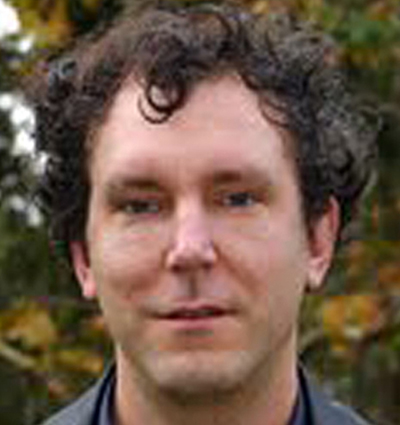
22nd Sep 2016, 15:00h.
NOTE: The colloquium will take place at Sala de Conferencias 121, CSIC, Calle Serrano, 113, 28006 Madrid
Gavin K. Brennen (Macquarie University, Sydney, Australia): "Quantum simulations of holographic duality".
The holographic principle asserts that spacetime may be like a hologram: information contained within the volume of spacetime can be encoded on the boundary of that spacetime. In this talk I'll introduce a concrete example of this principle via an exact holographic mapping of quantum field theory using Daubechies wavelets. I'll show how a boundary conformal field theory (CFT) can be encoded in a bulk with an emergent negative curvature described by anti de-Sitter (AdS) spacetime. The wavelet family index determines the size of the local region over which each step of renormalization is performed and this in turn determines the radius of curvature of the bulk. An experimental realization of this mapping could be achieved using multi-mode entangled states of continuous variable systems using e.g. photonic networks or trapped ions.

21st Sep 2016, 15:00h-16:00h.
Alba Cervera Lierta (Universidad de Barcelona): "Emergence of Symmetry from a Maximal Entanglement Principle".
We explore the possibility that gauge symmetry may be related to an information-theoretic principle that imposes the laws of nature should allow for the creation of maximally entangled states. This hypothesis is tested by considering a Lagrangian of free fermions and photons that interact via a generic coupling, partially restricted by unitarity and discrete symmetries. We then advocate a Maximal Entanglement principle that states initially configured as a product states in terms of helicity and polarization can develop into maximally entangled states. This principle is applied to all tree level fermion-fermion scattering processes, as well as those including photons as initial or final states, computed in the theory with generic coupling. We find that after imposing the Maximal Entanglement principle two possible solutions are allowed: the QED solution and other similar with a relative sign between the Dirac \gamma^{\mu} matrices. Our results hint that local symmetries, such as gauge symmetries, might have a more fundamental description in terms of information theory.
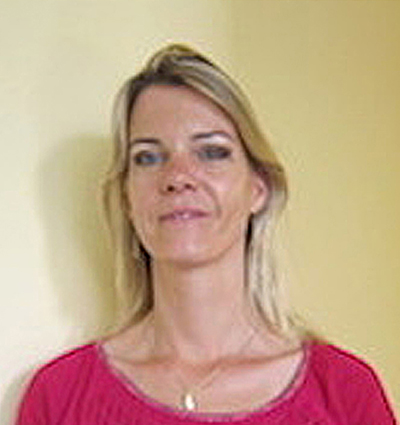
20th Jul 2016, 12:00h-13:00h.
Barbara Kraus (University of Innsbruck, Asutria): "LOCC transformations among multipartite pure states & entanglement measures".

29th Jun 2016, 16:00h-17:00h.
Carlos González Guillén (UPM): "Spectral gap of random quantum channels".
We will show that random quantum channels have generically a separation between the first and second eigenvalues. This result can be seen as a generalisation of Hasting's result for a set of random until channels (arXiv:0706.0556). We will discuss different applications of this result to study entropy and correlations in 1D tensor networks. Work in progress.

22nd Jun 2016, 16:00h-17:00h.
Ignacio Villanueva Díez: "Binary constraint systems, groups and Tsireltson’s problem".
Very recently, Slofstra uploaded a solution to one of the versions of Tsireltson’s problem (arXiv:1606.03140). The result builds upon work appeared at arXiv:1606.02278 and arXiv:1209.2729v3. I will give a view on the chain of results leading to Slofstra’s solution.

15th Jun 2016, 16:00h-17:00h.
Giannicola Scarpa: "Classical Verification of Quantum Proofs, Zhengfeng Ji, arXiv:1505.07432".
We present a classical interactive protocol that verifies the validity of a quantum witness state for the local Hamiltonian problem. It follows from this protocol that approximating the non-local value of a multi-player one-round game to inverse polynomial precision is QMA-hard. Our work makes an interesting connection between the theory of QMA-completeness and Hamiltonian complexity on one hand and the study of non-local games and Bell inequalities on the other.

8th Jun 2016, 16:00h-17:00h.
David Pérez-García: "The asymptotics of quantum max-flow min-cut".
The quantum max-flow min-cut conjecture relates the rank of a tensor network to the minimum cut in the case that all tensors in the network are identical1. This conjecture was shown to be false in Ref. 2 by an explicit counter-example. Here, we show that the conjecture is almost true, in that the ratio of the quantum max-flow to the quantum min-cut converges to 1 as the dimension N of the degrees of freedom on the edges of the network tends to infinity. The proof is based on estimating moments of the singular values of the network. We introduce a generalization of “rainbow diagrams”4 to tensor networks to estimate the dominant diagrams. A direct comparison of second and fourth moments lower bounds the ratio of the quantum max-flow to the quantum min-cut by a constant. To show the tighter bound that the ratio tends to 1, we consider higher moments. In addition, we show that the limiting moments as N → ∞ agree with that in a different ensemble where tensors in the network are chosen independently; this is used to show that the distributions of singular values in the two different ensembles weakly converge to the same limiting distribution. We present also a numerical study of one particular tensor network, which shows a surprising dependence of the rank deficit on N mod 4 and suggests further conjecture on the limiting behavior of the rank. (arxiv 1603.0371).

31st May 2016, 16:00h. Colloquium (Room Miguel de Guzmán).
Benoît Douçot (CNRS/U. Pierre et Marie Curie, France): "Spin textures in quantum Hall ferromagnets".
In the presence of a strong magnetic field, and for an integer filling of the Landau levels, Coulomb interactions favor a ferromagnetic ground-state. It has been shown already twenty years ago, both theoretically and experimentally, that when extra charges are added or removed to such systems, the ferromagnetic state becomes unstable and is replaced by spin textures called Skyrmions. Motivated by the case of graphene, we have generalized this notion to an arbitrary number d of internal states for the electrons, which may correspond to the combination of spin, valley, or layer indices. The first step is to associate a many electron wave-function, projected on the lowest Landau level, to any classical spin texture described by a smooth map from the plane to the projective space CP(d-1). In the large magnetic field limit, we assume that the spin texture is slowly varying on the scale of the magnetic length, which allows us to evaluate the expectation value of the interaction Hamiltonian on these many electron quantum states. The first non trivial term in this semi-classical expansion is the usual CP(d-1) non-linear sigma model, which is known to exhibit a remarkable degeneracy of the many electron states obtained from holomorphic textures. This degeneracy is lifted by the sub-leading term in the effective Hamiltonian, which selects a hexagonal Skyrmion lattice and therefore breaks both translational and internal SU(d) symmetries. We have computed the complete low-lying excitation spectrum, which separates into d^{2}-1 gapless acoustic magnetic modes and a magnetophonon branch. We conjecture that the residual interactions between these collective modes may be described by a non-linear sigma model on a non-commutative plane.
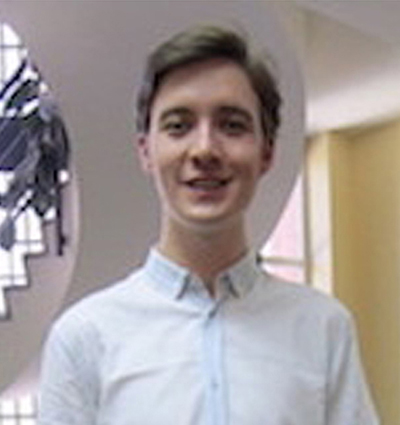
18th May 2016, 16:00h-17:00h.
Chris Self (University of Leeds): "Ising anyons at finite temperature".
Topological quantum computing offers a robust approach to quantum computation using braiding and fusion of anyonic particles. A particular type of anyons called Ising anyons are known to emerge from the microscopics of a spin lattice model called the Kitaev Honeycomb. We study the Ising anyon phase of the Kitaev honeycomb at finite temperature using Monte Carlo methods. We find evidence of the thermal fractionalization of the spins into Majorana modes, similar to the recent results of J. Nasu et al. who studied the non-Ising anyon phases of the model. We relate these findings to the finite temperature stability of the topological characteristics of the model. In addition we probe the thermal edge currents of the Kitaev honeycomb. Analogy to conformal field theory suggests that if the system has a boundary then at very low temperatures there should be a chiral edge current along that boundary that scales with temperature squared. By defining a microscopic current operator and taking its finite temperature expectation value we demonstrate edge currents that obey this scaling.

11th May 2016, 16:00h-17:00h.
David Pérez-García: "Uncomputability of the capacity of finite state channels".
The capacity of a noisy channel is the maximum asymptotic rate at which we can send information over it. For memoryless channels the capacity is given by a simple optimization problem as proven in Shannon’s noisy coding theorem. Furthermore, for these channels, we have the Blahut-Arimoto algorithm that efficiently solves the optimization problem and computes the capacity. What can be said about the general situation of channels with memory? In this work we consider one of the simplest families of such channels: the so-called finite state machine channels (FSMC). We show that there cannot exist any algorithm that approximates the capacity of every FSMC towithin any desired precision. More concretely, we construct a subfamily S of information stable FSMC with 10 elements in the input alphabet and 62 states so that the capacity of each member is either 1 or less than 1/2 and show that there cannot exist any algorithm that on input an element of S decides which is the case.

4th May 2016, 16:00h-17:00h.
Julio de Vicente (Universidad Carlos III de Madrid): "Possibilities and limitations of the resource theory of genuine quantum coherence".
Resource theories have been very successful to provide a rigorous theoretical framework to study quantum features such as entanglement in the context of quantum information theory. Given a particular type of quantum resource, these theories aim at characterizing all quantum states with this property, at identifying all possible protocols for its manipulation and at providing measures for its quantification. This relies crucially on the concept of free operations: the subset of completely-positive (CP) maps that the physical setting allows to implement at no cost. In the last years the superposition principle (or coherence) has been identified as a potential quantum resource which is believed to play a nontrivial role in the outstanding efficiency of certain biological processes such as photosynthesis. The theoretical ground for the construction of a resource theory of quantum coherence is currently being discussed and there are different proposals for what the set of free operations should be in this case. In this talk, I will consider the particular formalism of the so-called genuine coherence. I will show that in this case the free operations correspond to the class of CP maps known as Schur maps and I will use this to study in the detail the possibilities for state manipulation (deterministic, stochastic and asymptotic) in this theory. Our results show that this resource theory has serious limitations. This is based on arXiv:1604.08031 and is a joint work with A. Streltsov (FU Berlin).

28th Apr 2016, 13:00h.
Angelo Lucia: "Estabilidad y ley de área para sistemas cuánticos disipativos con equilibración rápida".
Angelo will make a pre-reading of his Thesis.

20th Apr 2016, 16:00h-17:00h.
Cécilia Lancien (UAB/Lyon): "Flexible constrained de Finetti reductions and parallel repetition of multi-player non local games".
Roughly speaking, de Finetti type theorems allow to reduce the analysis of permutation-invariant scenarios to that of i.i.d. ones. In this talk, I will present certain variants of such de Finetti reductions, and show how they can be used to study the parallel repetition of multi-player non-local games. More precisely, the problem one usually wants to solve in this context is the following: if players sharing certain physical resources cannot win one instance of a game with probability 1, does their probability of winning n instances of this game at the same time decays to 0 exponentially fast? Perhaps surprisingly, the answer to this question is not trivially "yes", even though I will show that e.g. in the case of no-signalling correlations between the players, it is indeed "yes" in almost full generality. If time allows, I will also discuss how such de Finetti reductions can be used to study the (weakly) multiplicative behavior of other quantities showing up in quantum information theory. This talk will be based on joint work with Andreas Winter, either appearing in arXiv[quant-‐ph]1506.07002 or still in progress.
13th Apr 2016. 16:00-17:00.
Open problems.
Each member will be free to share issues of interest to him or to her.
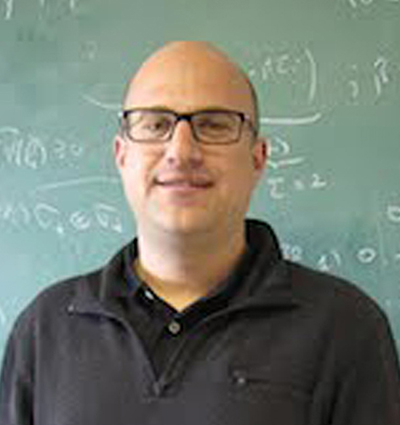
6th Apr 2016, 16:00h-17:00h.
Norbert Schuch (Max Planck Institute for quantum optics, Garching, Germany): "Topological phase transitions in tensor networks: A holographic perspective".
We investigate topological phases and phase transitions in the framework of tensor network models. We discuss the role of symmetries in this description, and show how it allows to relate topological phases and transitions between them to symmetry broken and symmetry protected phases exhibited by the transfer operator of the system, i.e., at the boundary. This is accomplished by translating the string-like topological excitations in the 2D bulk to string order parameters characterizing the different phases under symmetry at the boundary. We show that by taking into account the constraints arising from complete positivity of the transfer operator, which restricts the possible phases at the boundary, this yields a complete characterization of all possible ways in which topological phase transitions can occur through condensation and confinement of anyons.

30th Mar 2016, 16:00h-17:00h.
José Garre Rubio: "Classifying quantum phases with group extensions: from 1D to 2D".
In this talk we present an in progress approach to the classification of quantum phases of matter using Tensor Networks States. The study is focused on systems which contain symmetry aspects and topological order in two dimensions that can be described using PEPS. The presence of topological order (that can be interpreted in some cases as a gauge theory) constrains the way in which phase transitions can occur and new interesting phenomena appear. In order to describe the interplay between symmetry and topology we use the group extension theory. The starting point of this project is to recover the one-dimensional classification using MPS with these ideas.

16th Mar 2016, 12:30h-13:30h.
Angela Capel: "Entropy inequalities for unbounded spin systems".
I will present a result by P. Dai Pra, A.M. Paganoni and G. Posta (https://projecteuclid.org/download/pdf_1/euclid.aop/1039548378) in which they consider nonconservative, reversible spin systems, with unbounded discrete spins, and show that for a class of these dynamics in a high temperature regime, the relative entropy with respect to the equilibrium distribution decays exponentially in time, although the logarithmic-Sobolev inequality fails. To this end, they prove a weaker modification of the logarithmic-Sobolev inequality.

9th Mar 2016, 12:30h-13:30h.
Michael Mariën: "Tensor Networks and the Renormalisation Group".
Renormalisation Group (RG) ideas as introduced by Kadanoff and Wilson are of fundamental importance for the understanding of the universal behaviour of classical and quantum many body systems. More recently, tensor networks have emerged as a competitive tool for the numerical and analytical study of these systems. Both ideas can be combined to obtain a practical tool for the study of partition functions. In this seminar I introduce the idea behind RG, the relevant tensor networks and explain how insight in their structure lead to natural extensions of the basic block-spin methods. I also discuss possible applications (work in progress) to the understanding of the stability of topological phases and the construction of a true Hamiltonian RG flow.

2nd Mar 2016h 12:30h-13:30h.
Giannicola Scarpa: "On the Entropy of Graphs".
Graph Entropy is a parameter introduced by Janos Körner in 1973. It measures the complexity of a probabilistic graph and has an interesting information-theoretical interpretation: encoding a source with ambiguous alphabet. This quantity has three equivalent formulations: one typically graph-theoretical and two information-theoretical ones. It relates nicely with Shannon entropy and with the theory of perfect graphs. In this talk I introduce the classical concept and define a similar quantity for non-commutative graphs, together with a quantum information theoretical interpretation. This is a work-in-progress with Josh Lockhart, Ivan Todorov and Andreas Winter.

17th Feb 2016, 12:30h-13:30h.
Erik Tonni: "Entanglement and the adS/CFT correspondence".
We review the basic notions of AdS/CFT correspondence focussing on the holographic prescription to compute the entanglement entropy. We show how such formula satisfies the strong subadditivity for the entanglement entropy. In the case of AdS4, which is the bulk spacetime dual to a 2+1 dimensional conformal field theory in the vacuum, the subleading term in expansion of the holographic entanglement entropy as the UV cutoff goes to zero involves the evaluation of the Willmore functional on a specific two dimensional surface.

10th Feb 2016, 12:30h-13:30h.
Andrea Coser: "Entanglement negativity in Quantum Field Theory".
We will give an introduction to some techniques for quantifying bipartite entanglement in Quantum Field Theories through a replica trick. These techniques have been widely applied to compute the entanglement entropy in many different systems in a pure state. A similar approach can be used to compute the entanglement negativity, an entanglement measure that quantifies entanglement also in mixed states. We will focus on (1+1)-dimensional Quantum Field Theories and in particular on Conformal Field Theories, where exact computations can be performed for simple models. The results are checked against some lattice computations.

21st Jan 2016, 09:45h-11:00h.
Carlos Fernández: "The structure of MPS".
We will present a recent result by M. Navascués and T. Vertesi (http://arxiv.org/abs/1509.04507) in which they point out an interesting property of Matrix Product States arising from the existence of homogeneous polynomials which vanish when evaluated at $D\times D$ matrices but not when evaluated at $D'\times D'$ matrices for $D'>D$. This property may have dramatic consequences in the use of MPSs for DMRG methods.
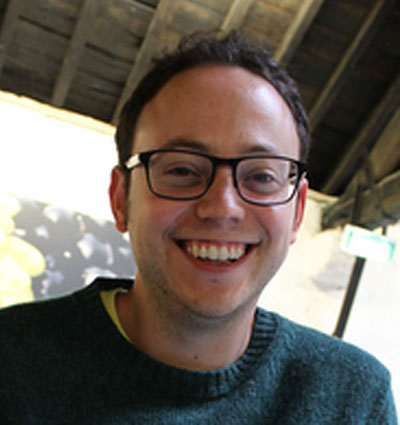
17th Dec 2015, 09:45h-11:00h.
David Elkouss: "(Nearly) optimal P-values for all Bell inequalities".
A key objective in conducting a Bell test is to quantify the statistical evidence against a local-hidden variable model (LHVM) given that we can collect only a finite number of trials in any experiment. The notion of statistical evidence is thereby formulated in the framework of hypothesis testing, where the null hypothesis is that the experiment can be described by an LHVM. The statistical confidence with which the null hypothesis of an LHVM is rejected is quantified by the so-called P-value, where a smaller P-value implies higher confidence. Establishing good statistical evidence is especially challenging if the number of trials is small, or the Bell violation very low.

10th Dec 2015, 09:45h-11:00h.
Carlos González: "The complexity of entanglement detection via Dvoretzky's theorem.".
The Horodecki criterion asserts that a state ρ on C^d⊗C^d is entangled if and only if there exists a positive map Φ: M_d -> M_d such that the operator (Φ⊗I)(ρ) is not positive semi-definite. We show that the number of maps needed to detect states that are entangled even in the presence of noise is super-exponential. The proof uses technics from Geometric Analysis, in particular the Dvoretzky's theorem. The result can be interpreted as a geometrical manifestation of the complexity of entanglement detection. This is an exposition of the results and ideas of http://arxiv.org/abs/1510.00578.

26th Nov 2015, 09:45h-11:00h.
David Pérez-García: "Renormalization Fixed Points in PEPS. Recovering the bulk from the boundary".
I will give in this talk a complete characterization of RG fixed points in the context of Matrix Product Operators. If we understand them as the boundary theory of a topologically ordered bulk, we will see how we can distill all the topological content of the bulk from the structure obtained in our characterization. Joint work with J. I. Cirac, N. Schuch and F. Verstraete.

12th Nov 2015, 09:45h-11:00h.
Sofyan Iblisdir: "Rényi entropies of ultra-cold gases".
A measurement scheme for Rényi entropies of an ensemble of atoms trapped in an optical lattice is presented. It relies on global soft collisions, and the ability to address single particles of the ensemble individually. The time required for the measurement is independent of the system size. The scheme allows to detect conformal symmetry in one spatial dimension, together with an efficient estimation of central charges. The possibility to reveal typical signatures of topological order in two spatial dimensions, and to infer entanglement spectra is also discussed. En passant, a novel scheme to prepare large GHZ states is introduced, as well as a protocol to disentangle quantum states; they are of interest beyond the present context.

29th Oct 2015, 09:45h-11:00h.
Alex Monràs: "Quantum learning of classical stochastic processes".
Among several tasks in Machine Learning, is the problem of inferring the latent variables of a system and their causal relations with the observed behavior. A paradigmatic instance of such problem is the task of inferring the Hidden Markov Model underlying a given stochastic process. This is known as the positive realization problem (PRP) and constitutes a central problem in machine learning. The PRP and its solutions have far-reaching consequences in many areas of systems and control theory, and is nowadays an important piece in the broad field of positive systems theory.
We consider the scenario where the latent variables are quantum (e.g., quantum states of a finite-dimensional system), and the system dynamics is constrained only by physical transformations on the quantum system. The observable dynamics is then described by a quantum instrument, and the task is to determine which quantum instrument –if any– yields the process at hand by iterative application.
We take as a starting point the theory of quasi-realizations, whence a description of the dynamics of the process is given in terms of linear maps on state vectors and probabilities are given by linear functionals on the state vectors. This description, despite its remarkable resemblance with the Hidden Markov Model, or the iterated quantum instrument, is however devoid from any stochastic or quantum mechanical interpretation, as said maps fail to satisfy any positivity conditions. The Completely-Positive realization problem then consists in determining whether an equivalent quantum mechanical description of the same process exists.
We generalize some key results of stochastic realization theory, and show that the problem has deep connections with operator systems the- ory, giving possible insight to the lifting problem in quotient operator systems. Our results have potential applications in quantum machine learning, device-independent characterization and reverse-engineering of stochastic processes and quantum processors, and more generally, of dynamical processes with quantum memory.

22nd Oct 2015, 09:45h-11:00h.
Julio de Vicente: "Operational multipartite entanglement measures".
While the theory of bipartite entanglement is well developed, the multipartite case is more poorly understood. Even in the case of pure states, we lack general and computable entanglement measures with a clear operational meaning in terms of the paradigm of local operations and classical communication (LOCC), as is the case for bipartite systems. In this talk I will introduce two operational entanglement measures which are applicable for arbitrary multipartite states. They characterize the potentiality of a state to generate (or of being generated by) other states via LOCC. I will also discuss how these measures can be computed. This is joint work with the group of B. Kraus in Innsbruck [Phys. Rev. Lett. 115, 150502 (2015) (http://arxiv.org/abs/1503.00615) and http://arxiv.org/abs/1508.02524].

15th Oct 2015, 09:45h-11:00h.
Ignacio Villanueva: "From Quantum vs Classical communication advantage to violation of a Bell Inequality".
We consider a binary function for which the classical communication complexity is much bigger than the quantum communication complexity (definitions will be properly stated in the seminar). We show how we can obtain then a Bell Inequality for which the entangled value is much bigger than the classical value (both of them without assisted communication). This is an exposition of the results and ideas of http://arxiv.org/abs/1502.01058.

26th May 2015, 13:00h-14:00h.
Giannicola Scarpa: "Nonsignalling correlated Nash equilibria in games of incomplete information".
In the work of the game theorist Françoise Forges, nonsignalling correlations independently appear under the name of "belief-invariant correlations". The motivation and the use of these objects are different than what we would expect in quantum information theory. Here, we unify the two views and introduce the concept of "nonsignalling correlated Nash equilibrium" for games of incomplete information (i.e., competitive games with private inputs). In our framework, nonsignalling correlations are not used to study the property of the physical world, but are a method to regulate the behaviour of competing players while "respecting their privacy". We model, for example, situations where competing companies benefit from a correlated strategy, without revealing their trade secrets (i.e. private inputs). We will conclude with some open questions, such as the computational complexity and the largest advantage over the other known classes of equilibria. This is work-in-progress, together with Andreas Winter (Barcelona) and Ashutosh Rai (Latvia).

23rd Mar 2015, 13:00h-14:00h.
Maris Ozols: "Entropy power inequalities for qudits".
The talk will be about the recent result (http://arxiv.org/abs/1503.04213).

8th Apr 2015, 11:50h-13:00h.
Nicolás Robles: "Segundos momentos de la función zeta de Riemann y sus ceros.".
Estudiamos integrales de segundo orden de la función zeta "torcidas" por polinomios de Dirichlet. Su aplicación es el incremento de % de ceros de la función zeta en la linea critica.

18th Mar 2015, 11:50h-13:00h.
Johannes Bausch: "The Complexity of Divisibility of Probability Distributions".
We address a set of long-standing open questions in probability theory, from a computational complexity perspective. We prove a complexity hierarchy for the divisibility and decomposability of probability distributions, showing that finite distribution divisibility is in P, but decomposability is NP-hard. For the former, we give an explicit polynomial-time algorithm. All results on distributions extend to weak-membership formulations, proving that the complexity of these problems is robust to perturbations.

11th Mar 2015, 11:50h-13:00h.
Carlos Fernández González: "Non-Abelian anyons in quantum double models: coding and computing".
We will extend the notions we already reviewed in a past seminar about Abelian anyons in the toric code to the non-Abelian setting. We will show how they can be used to encode information and perform computations without acting on non-contractible loops.

4th Mar 2015, 11:50h-13:00h.
David Perez-Garcia: "Positivity in Matrix Product Operators".
In this talk I will present ongoing work about the problem of characterizing positivity in a Matrix Product Operator. I will explain the motivation of the problem and recent results obtained in collaboration with T. Cubitt, G. de las Cuevas and M. Wolf.

25th Feb 2015, 11:50h-13:00h.
Angelo Lucia: "Graph colouring and two-players non-local games".
I would like to present the connection that exists between two-players non-local games and colouring of graphs. While the original connection is probably due to [quant-ph/0608016], I would like to present it using the ideas form [arxiv:1407.6918]: using their framework it is easy to see how different restrictions on the capabilities of the two players (classical resources, quantum resource and entanglement, non-signalling, etc.) lead to different definition of chromatic numbers for graphs. This allows to restate the problem of separating different type of correlations (classical/quantum, quantum/non-signalling) as a problem of separating different chromatic numbers, and therefore gives yet another reformulation of the Tsirelson problem and Connes embedding problem.

4th Feb 2015, 11:50h-13:00h.
Julio de Vicente: "Simple conditions constraining the set of quantum correlations".
The characterization of the set of quantum correlations in Bell scenarios is a problem of paramount importance for both the foundations of quantum mechanics and quantum information processing in the device-independent scenario. However, the only systematic and general form so far to bound this set is given by the NPA hierarchy. Although this constitutes an extremely powerful tool, its applicability is bound to our limited computational resources. Moreover, some problems might not be tackled numerically and it would be desirable to have simple analytical conditions constraining the set of quantum correlations. In this talk, I will provide simple and general analytical conditions that are necessary for an arbitrary bipartite behaviour to be quantum. Although the conditions are not sufficient, they are strong and non-trivial as several examples show. Finally, I will discuss several applications of this result: a proof of the separation of the quantum set from extremal nonlocal no-signaling behaviours in several general scenarios and a systematic construction to obtain Tsirelson bounds for arbitrary bipartite Bell inequalities. therefore gives yet another reformulation of the Tsirelson problem and Connes embedding problem.

23rd Sep 2014, 11:00h-12:00h.
Ignacio Villanueva: "Distance between Haar orthogonal and gaussian matrices".
We study a meaningful euclidean distance between a random gaussian matrix $Y$ and a haar distributed random orthogonal matrix $U$, both of them of large dimension $n$. It has been known for more of a century that a single coordinate $u_{i,j}$ of $U$, multiplied by $\sqrt{n}$, distributes like a standard gaussian random variable $y_{i,j}$. The question of how many coordinates of $U$ can be simultaneously approximated by independent gaussians has been studied by many authors during this and the past century. Probably the sharpest result up to date is due to Jiang, in 2005, where he shows that you can approximate blocks of size $n\times o(\frac{n}{\ln n})$ if you want convergence in probability of the supremum norm, and he shows the optimality of that range. We study and fully characterise the convergence in probability of a certain meaningful euclidean norm of blocks of the difference $Y-\sqrt{n}U$. As an application, we can give information about the probability that certain quantum correlations are not classical. As a proof of the strength of our result, we can recover Jiang’s result as a corollary. In the talk I will present and introduction to the problem, state our result and give a simple idea of the proof, and I will suggest possible applications for QI.

12th Jun 2014, 15:30h-16:30h.
David Elkouss: "On the number of uses of the channel needed to find positive coherent information".
The quantum capacity of a channel is given by the regularization of the coherent information of an unbounded number of uses of the channel. This regularization is necessary due to the nonadditive behaviour of the coherent information. However, all results until now had shown superadditivity violations only up to a small finite number of uses. In this seminar, for any number of uses, we present a channel with zero coherent information but positive quantum capacity.
 29th May 2014, 15:30h-16:30h.
29th May 2014, 15:30h-16:30h.
Carlos Hugo Jiménez: "Medidas log-concavas y algunas conexiones con geometría convexa y teoría de información".
En esta charla daremos una breve introducción a las medidas log-concavas y mostraremos como aparecen naturalmente al estudiar diversos parámetros en geometría convexa. Después de esto, mencionaré algunos nuevos resultados en forma de desigualdades funcionales que extienden resultados clásicos en Geometría Convexa. Finalmente, veremos algunas aplicaciones de estos resultados que están relacionadas con teoría de información.

19th May 2014, 15:30h-16:30h.
Julio de Vicente: "LOCC entanglement transformations: embezzling quantum states".
In this seminar I will review some relsults on bipartite LOCC entanglement transformations, particularly the embezzling protocol of Van Dam and Hayden http://arxiv.org/abs/quant-ph/0201041.

12th May 2014, 15:30h-16:30h.
Ignacio Villanueva: "P vs NP".
I will formally introduce the problem and relate it to the decidability problem.

5th May 2014, 15:45h-16:45h.
Carlos Palazuelos: "On the classical capacity of certain quantum channels".
The idea of the seminar is to recall the concept of the classical capacity of a quantum channel with and without (restricted) assited entanglement. Then, we will present two basic channels, the quantum depolarizing and the quantum erasure channel, and we will explain how the capacity of these channels can be computed. In particular, we will show some surprising facts for them.

28th Apr 2014, 13:00h-14:00h.
Carlos González: "Entrelazamiento y simetría en sistemas cuánticos de muchos cuerpos".

9th Apr 2014, 15:30h-16:30h.
Gemma de las Cuevas: "Purifications of multipartite states: limitations and constructive methods".
Matrix product forms are an efficient way of representing quantum many-body systems. For mixed states, there are two such forms: (i) as matrix product density operators, or (ii) as a purification that is itself written as a matrix product state, which allows to check positivity locally, and is thus well-behaved and stable under local truncations. Here we show that form (ii) can be arbitrarily more costly than form (i), thus revealing a tradeoff between efficiency and local positivity. Our proof uses very recent results in convex polytopes, which have also been used to prove separations in communication complexity. In addition, we provide two constructive methods to obtain form (ii) out of (i). The sum of squares polynomial method scales exponentially in the number of different eigenvalues, and its approximate version is formulated as a Semidefinite Program, which works efficiently and robustly for the tested eigenvalue distributions. The eigenbasis method scales quadratically in the number of eigenvalues, and its approximate version is very efficient for rapidly decaying distributions. Our results imply that a description of mixed states that is both efficient and locally positive semidefinite does not exist, but that good approximations do. (Joint work with N. Schuch, D. Pérez-García and J. I. Cirac. Published in New J. Phys. 15, 123021 (2013).
 8th Apr 2014, 13:00h-14:00h.
8th Apr 2014, 13:00h-14:00h.
Carlos Fernández: "Métodos matemáticos en problemas de entrelazamiento: convertibilidad de estados, medidas conjuntas y hamiltonianos en PEPS".

24th Mar 2014, 11:00h-12:00h.
Tom Cooney: "On adaptive quantum channel discrimination and quantum-feedback-assisted communication".
I will discuss the problem of discriminating between an arbitrary quantum channel N and a “replacer” channel that maps all states to a fixed state \sigma. We allow for an arbitrary preparation and adaptive operations in between n invocations of the channel. This will be related to a relative entropy and then used to obtain a strong converse of the classical capacity of a quantum channel assisted by an unbounded noiseless quantum feedback channel. (Based on work with Mark Wilde, Milan Mosonyi, Nilanjana Datta).

13th Mar 2014, 11:00h-12:00h.
Sofyan Iblisdir: "Markov chains for tensor network states".
Markov chains for probability distributions related to matrix product states and 1D Hamiltonians are introduced. With appropriate 'inverse temperature' schedules, these chains can be combined into a random approximation scheme for ground states of such Hamiltonians. Numerical experiments suggest that a linear, i.e. fast, schedule is possible in non-trivial cases. A natural extension of these chains to two-dimensional quantum Hamiltonians is next presented and tested. This extension is stable by construction and the obtained results compare well with euclidean evolution. The proposed Markov chains are inherently sign problem free (even for fermionic degrees of freedom), and the random approximation scheme can be tailored to escape local minima.

3rd Mar 2014, 11:00h-12:00h.
Yacine Barhoumi: "Some consequences of the Keating-Snaith philosophy".
Recent progresses in Number Theory are due to the application of the Keating-Snaith philosophy that consists in solving a surrogate problem in Random Matrix Theory where the computations are notably easier to achieve or to adapt results from Number Theory in the random matrix world. In this talk, we will remind the historical developments that led to such a methodology and we will apply the Keating-Snaith philosophy to the problem of counting the number of zeroes of linear combinations of characteristic polynomials of independent random unitary matrices, a question initially motivated by the study of L-functions. In particular, we explain why a hundred percent of the zeroes of such a combination lie on the unit circle (joint work with C. P. Hughes, J. Najnudel and A. Nikeghbali).

24th Feb 2014, 11:00h-12:00h.
Carlos Fernández: "Thermodynamic limit of MPSs and the toric code, and spectral gaps of associated Hamiltonians".
In this talk, we will review some basic techniques related to Matrix Product States and we will formally describe the thermodynamic limit of parent and uncle Hamiltonians. We will compare the spectral properties of these two types of Hamiltonians. Finally, we will briefly sketch the analogue problem for the toric code, detailing the new difficulties that arise in this case.

14th Feb 2014, 11:00h-12:00h.
Julio de Vicente: "On nonlocality as a resource theory and nonlocality measures".
With the advent of device independent quantum information processing, nonlocality is nowadays regarded as a resource to implement various tasks. On the analogy of entanglement theory we will approach nonlocality from this perspective. In order to do so, we will analyze in full detail the operations that can be implemented in this scenario and under which nonlocality cannot increase. This provides a theoretical ground to study how to order and quantify nonlocal behaviours. Finally, we will review several nonlocality measures and discuss their validity from this point of view. (Based on arXiv:1401.6941)

8th Feb 2014, 11:00h-12:00h.
Yeong-Cherng
The presence of quantum nonlocality, from a resource point of view, dictates that certain correlations derived from local measurements on quantum systems cannot be reproduced using only shared randomness. In the multipartite scenario, a stronger form of nonlocality called "genuine" multipartite nonlocality is possible. To detect this conventional notion of multipartite nonlocality, one makes use a characterization of the set of correlations that are biseparable, i.e., which can be produced by parties separated into two groups. In this talk, I discuss a characterization of multipartite nonlocality where the size of the group plays a more fundamental role. This allows us to define k-partite nonlocality in an n-partite scenario for k .

8th Oct 2013, 11:00h-12:00h.
Carlos Palazuelos. "The classical capacity of a quantum channel with d-assisted entanglement"
"In this talk we will start by introducing the classical capacity of a quantum channel (with assisted entanglement). Then we will study some basic examples like the quantum depolarizing channel and the quantum erasure channel.

11th Jun 2013, 11:00h-12:00h.
Hugo Jimenez will talk about the paper "Hastings' additivity counterexample via Dvoretzky's theorem" (arXiv:1002.4925).

5th Jun 2013, 11:00h-12:00h.
David Elkouss will present a security proof of QKD in the asymptotic setting. If time allows, he will also discuss the implication of using imperfect devices and exchanging a finite number of signals.

21st May 2013, 11:00h-12:00h.
Carlos Gonzalez will talk about the paper "Entanglement rates and area laws" (arXiv:1304.5931).

8th May 2013, 11:00h-12:00h.
Ignacio Villanueva will talk about the paper Quantum strategies are better than classical in almost any XOR game and some recent improvements on this topic.

24th Apr 2013, 11:00h-12:00h.
Miguel Tierz. "Spin chains and random matrices"
I will show how correlation functions of very simple 1d spin chain models admit an integral representation of the random matrix type.

19th Apr 2013, 13:00h-14:00h.
Julio de Vicente. "Multipartite LOCC transformations and multipartite maximally entangled states"
Understanding the properties and applications of multipartite quantum states is one of the main goals of quantum information theory. However, since the number of free parameters scales exponentially with the numbers of parties, the set of states is huge and hard to grasp. This is why a lot of effort has been put forward to characterize and understand subsets of multipartite states with relevant physical and/or mathematical properties. On the other hand, entanglement is believed to be a key a resource, so, naturally the class of maximally entangled states must be an interesting object of study. However, while the community agrees in what the maximally entangled state is in the bipartite case, the situation gets confusing already for three and more parties. In the first part of the talk, I will argue that the only meaningful notion of maximal entanglement corresponds to maximal usefulness under LOCC (i.e. local operations and classical communication) transformations and, hence, the characterization of these states boils down to the elusive problem of deciding LOCC convertibility. In the second part of the talk, I will show how LOCC transformations can be characterized in the 3 and 4-qubit case. Since this induces the natural ordering in the set of entangled states this allows to decide the usefulness of the different states and to identify multipartite maximally entangled states. Moreover, I will show some surprising consequences of this characterization.

2nd-16th Apr 2013.
Carlos Palazuelos. Introduction to Quantum Information Theory II (UCM).
The second part of the course, will be devoted to a more detailed study of quantum Shannon theory: Some basic notions of classical information theory, Schumacher compression theorem, von Neumann entropy properties, Capacities of quantum channels, etc.

19th-21st Mar 2013.
Carlos Palazuelos. Introduction to Quantum Information Theory I (ICMAT).
Quantum information theory (QIT) is a very exciting field which has rapidly advanced over the past ten years. Beyond its potential applications in some important areas like computing or cryptography, a very interesting feature of QIT is that it collects researchers from many different areas like mathematics, physics, chemistry and computer science. In this course we will introduce some of the most important topics in quantum information theory. In this 5 hours course we will treat some basic topics in quantum information theory:
- Postulates of quantum mechanics and some basic results: Quantum teleportation, Superdense coding, etc.
- Quantum entanglement and quantum nonlocality: Bell inequalities and some applications.
- Some notions about quantum Shannon theory.

13th Mar 2013, 11:00h-12:00h.
David Perez-Garcia. Presentation of the paper "Strong Parallel Repetition for a Monogamy-of-Entanglement Game" (arXiv:1210.4359).
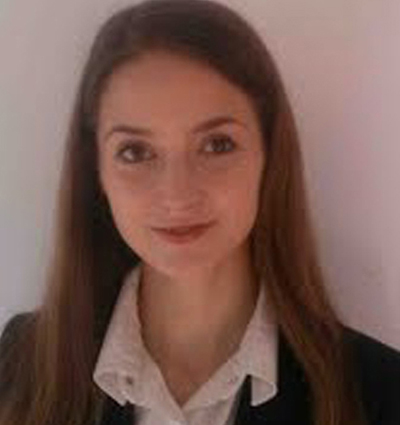
6th Mar 2013, 11:00h-12:00h.
Andrea Cadarso. "Phase stabilization of a frequency comb using multi-pulse quantum interferometry"
In this week's seminar I would like to introduce the concept of "multipulse quantum interferometry", which consists on an atom probing a sequence of ultrashort laser pulses, efficiently computing the differences among them. Formally, we will model the atom-light interaction as a sequence of unitaries acting on a qubit space, with one unitary acting per laser pulse and we explain how we can engineer protocols that accurately determine the differences among the pulses, or the properties of the individual pulses themselves. A direct application of multipulse quantum interferometry will be the characterisation and stabilisation of a frequency comb. For this, we will e study the interaction between a frequency comb and one or more non-interacting atoms, and derive a set of quantum protocols for the determination of the carrier-envelope offset frequency using the atomic coherence as a reference. Formally, the optimal protocols exhibit an enhanced sensitivity, O(N-2), where N is the number of laser pulses involved, and can be realized with a single qubit.

11th Feb 2013, 11:00h-12:00h.
Benjamin Brown. "To what extent can a topological defect be regarded as anyon-like?"
Topologically ordered phases of matter offer an attractive approach to fault tolerant quantum computation. They give rise to exotic quasi-particle excitations known as anyons. Anyons have a degenerate Hilbert space associated to them, which can be used to encode quantum information over non-local degrees of freedom. Recently, it has been shown that twists, the end points of dislocations in the toric code model, and the quasi-particles available on the toric code has some features in common with a different anyon model, the Ising anyon model. Specifically, it is known that twists have the same fusion properties as Ising anyons. Characteristics of topologically ordered phases of matter can be assessed by calculating the topological entanglement entropy of regions the ground state of its Hamiltonian. Further to this, data for anyonic quasi-particle excitations of a topological phase can also be calculated using the von Neumann entropy. In this talk we present results which show analytically that twists give the same topological data as Ising anyons using extensions of known topological entanglement entropy formulas, extending further the analogy between twists and Ising anyons.

8th Feb 2013, 15:30h-16:30h.
Jeongwan Haah. "Quantum codes on lattices"
We study unfrustrated spin Hamiltonians that consist of commuting tensor products of Pauli matrices; the ground space is identified with code space. Assuming translation-invariance, we observe that the Hamiltonian is described by a matrix of polynomials. The conditions that the matrix define a commuting Hamiltonian and that there are no local observable for the ground space (code space) are interpreted as equations on the polynomial matrix. Then, we discuss consequences of the number of dimensions of the lattice. For instance, one can show that in three dimensions there must exist a topologically nontrivial point-like charge appearing at a vertex of some "fractal" operator. We also discuss tools to compute the ground state degeneracy and to handle local unitary transformations.

6th-12th Feb 2013.
Jeongwan Haah, researcher at Caltech, Benjamin Brown, researcher at Imperial College and Courtney Brell, researcher at University of Sydney will be visiting our group.

21th-25th Jan 2013.
Our group participated (and enjoyed) this year's excellent edition of QIP. Three papers of members of the group made it to the highly selective oral presentations:
Super-activation of quantum nonlocality. (arXiv:1205.3118v3)
- Tom Cooney, Marius Junge, Carlos Palazuelos, David Perez-Garcia, Oded Regev, and Thomas Vidick:
Rank-one and Quantum XOR games. (arXiv:1112.3563 and arXiv:1207.4939)
- Norbert Schuch, Didier Poilblanc, Ignacio Cirac, and David Perez-Garcia:
Resonating valence bond states in the PEPS formalism. (arXiv:1203.4816)

9th-13th Dec 2012.
Georgios Giasemidis, researcher at Oxford University, will be visiting our group.

27th-30th Nov 2012.
Maarten van den Nest, postdoc at MPQ Garching, will be visiting our group.

18th-22th Nov 2012.
Norbert Schuch, professor at RWTH Aachen University, will be visiting our group.

14th Nov 2012, 10:30h-11:30h.
Hugo Jiménez. "Concentration of Measure phenomenon and Push forward measures"
I will give and overview on concentration of measure and its relation with some other important functional inequalities, I will explain its role on the proof of Dvoretzky Theorem due to Milman. If there are some Almendrados left after this, I will discuss how one can use Push-forward measures to transfer concentration (or other related properties) between even those spaces far apart in terms of the Banach-Mazur distance.

7th Nov 2012, 10:30h-11:30h.
David Elkouss. "Superactivation of quantum capacity."
We will present the results of Smith and Yard on the superactivation of the quantum capacity.

30th Oct 2012, 15:00h-16:00h.
Carlos Palazuelos. "Hypercontractivity in harmonic analysis and quantum field theory."
I will give an overview on hypercontractivity. I will explain hypercontractivity from a ``trigonometric'' and a ``gaussian'' point of view. I will also see the connections with logarithmic Sobolev inequalities. If I have enough time I will explain some applications of the Bonami-Beckner inequality to some problems in computer sciences.

24th Oct 2012, 15:00h-16:00h.
Tom Cooney. "The Monster, a construction from the deep!"
We'll discuss how group and hopf algebra actions can be defined on Matrix Product States. We are particularly interested in trying to use a monster called the projective version of the half-liberated orthogonal free compact quantum group to construct a monstrous symmetry that behaves strangely under regroupings of the physical sites. Based on work in progress with David Perez Garcia and Oliver Buerschaper.

15th-19th Oct 2012.
Gemma de las Cuevas, postdoc at MPQ Garching, will be visiting our group.

